
It has become compulsory for modern medical (or scientifically-relevant) shows to rely on a team of advisors and experts for maximal technical accuracy and verisimilitude on screen. Many of these shows have become so culturally embedded that they’ve changed people’s perceptions and influenced policy. Even the Gates Foundation has partnered with popular television shows to embed important storyline messages pertinent to public health, HIV prevention and infectious diseases. But this was not always the case. When Neal Baer joined ER as a young writer and simultaneous medical student, he became the first technical expert to be subsumed as an official part of a production team. His subsequent canon of work has reshaped the integration of socially relevant issues in television content, but has also ushered in an age of public health awareness in Hollywood, and outreach beyond it. Dr. Baer sat down with ScriptPhD to discuss how lessons from ER have fueled his public health efforts as a professor and founder of UCLA’s Global Media Center For Social Impact, including storytelling through public health metrics and leveraging digital technology for propelling action.
Neal Baer’s passion for social outreach and lending a voice to vulnerable and disadvantaged populations was embedded in his genetic code from a very young age. “My mother was a social activist from as long as I can remember. She worked for the ACLU for almost 45 years and she participated in and was arrested for the migrant workers’ grape boycott in the 60s. It had a true and deep impact on me that I saw her commitment to social justice. My father was a surgeon and was very committed to health care and healing. The two of them set my underlying drives and goals by their own example.” Indeed, his diverse interests and innate curiosity led Baer to study writing at Harvard and the American Film Institute and eventually, medicine at Harvard Medical School. Potentially presenting a professional dichotomy, it instead gave him the perfect niche — medical storytelling — that he parlayed into a critical role on the hit show ER.

During his seven-year run as medical advisor and writer on ER, Baer helped usher the show to indisputable influence and critical acclaim. Through the narration of important, germane storylines and communication of health messages that educated and resonated with viewers, ER‘s authenticity caught the attention of the health care community and inspired many television successors. “It had a really profound impact on me, that people learn from television, and we should be as accurate as possible,” Baer reflects. “[Viewers] believe it’s real, because we’re trying to make it look as real as possible. We’re responsible, I think. We can’t just hide behind the façade of: it’s just entertainment.” As show runner of Law & Order: SVU, Baer spearheaded a storyline about rape kit backlogs in New York City that led to a real-life push to clear 17,000 backlogged kits and established a foundation that will help other major US cities do the same. With the help of the CDC and USC’s prestigious Norman Lear Center, Baer launched Hollywood, Health and Society, which has become an indispensable and inexhaustible source of expert information for entertainment industry professionals looking to incorporate health storylines into their projects. In 2013, Baer co-founded the Global Media Center For Media Impact at UCLA’s School of Public Health, with the aim of addressing public health issues through a combination of storytelling and traditional scientific metrics.
Soda Politics
One of Baer’s seminal accomplishments at the helm of the Global Media Center was convincing public health activist Marion Nestle to write the book Soda Politics: Taking on Big Soda (And Winning). Nestle has a long and storied career of food and social policy work, including the seminal book Food Politics. Baer first took note of the nutritional and health impact soda was having on children in his pediatrics practice. “I was just really intrigued by the story of soda, and the power that a product can have on billions of people, and make billions of dollars, where the product is something that one can easily live without,” he says. That story, as told in Soda Politics, is a powerful indictment on the deleterious contribution of soda to the United States’ obesity crisis, environmental damage and political exploitation of sugar producers, among others. More importantly, it’s an anthology of the history of dubious marketing strategies, insider lobbying power and subversive “goodwill” campaigns employed by Big Soda to broaden brand loyalty.
Even more than a public health cautionary tale, Soda Politics is a case study in the power of activism and persistent advocacy. According to a New York Times expose, the drop in soda consumption represents the “single biggest change in the American diet in the last decade.” Nestle meticulously details the exhaustive, persistent and unyielding efforts that have collectively chipped away at the Big Soda hegemony: highly successful soda taxes that have curbed consumption and obesity rates in Mexico, public health efforts to curb soda access in schools and in advertising that specifically targets young children, and emotion-based messaging that has increased public awareness of the deleterious effects of soda and shifted preference towards healthier options, notably water. And as soda companies are inevitably shifting advertising and sales strategy towards , as well as underdeveloped nations that lack access to clean water, the lessons outlined in the narrative of Soda Politics, which will soon be adapted into a documentary, can be implemented on a global scale.
ActionLab Initiative
Few technological advancements have had an impact on television consumption and creation like the evolution of digital transmedia and social networking. The (fast-crumbling) traditional model of television was linear: content was produced and broadcast by a select conglomerate of powerful broadcast networks, and somewhat less-powerful cable networks, for direct viewer consumption, measured by demographic ratings and advertising revenue. This model has been disrupted by web-based content streaming such as YouTube, Netflix, Hulu and Amazon, which, in conjunction with fractionated networks, will soon displace traditional TV watching altogether. At the same time, this shifting media landscape has burgeoned a powerful new dynamic among the public: engagement. On-demand content has not only broadened access to high-quality storytelling platforms, but also provides more diverse opportunities to tackle socially relevant issues. This is buoyed by the increased role of social media as an entertainment vector. It raises awareness of TV programs (and influences Hollywood content). But it also fosters intimate, influential and symbiotic conversation alongside the very content it promotes. Enter ActionLab.
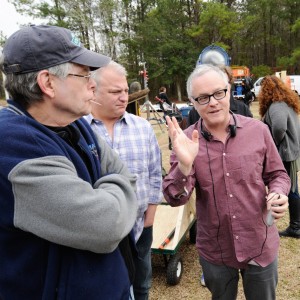
One of the critical pillars of the Global Media Center at UCLA, ActionLab hopes to bridge the gap between popular media and social change on topics of critical importance. People will often find inspiration from watching a show, reading a book or even an important public advertising campaign, and be compelled to action. However, they don’t have the resources to translate that desire for action into direct results. “We first designed ActionLab about five or six years ago, because I saw the power that the shows were having – people were inspired, but they just didn’t know what to do,” says Baer. “It’s like catching lightning in a bottle.” As a pilot program, the site will offer pragmatic, interactive steps that people can implement to change their lives, families and communities. ActionLab offers personalized campaigns centered around specific inspirational projects Baer has been involved in, such as the Soda Politics book, the If You Build It documentary and a collaboration with New York Times columnist Nicholas Kristof on his book/documentary A Path Appears. As the initiative expands, however, more entertainment and media content will be tailored towards specific issues, such as wellness, female empowerment in poor countries, eradicating poverty and community-building.
“We are story-driven animals. We collect our thoughts and our memories in story bites,” Baer notes. “We’re always going to be telling stories. We just have new tools with which to tell them and share them. And new tools where we can take the inspiration from them and ignite action.”
Baer joined ScriptPhD.com for an exclusive interview, where he discussed how his medical education and the wide-reaching impact of ER influenced his social activism, why he feels multi-media and cross-platform storytelling are critical for the future of entertainment, and his future endeavors in bridging creative platforms and social engagement.
ScriptPhD: Your path to entertainment is an unusual one – not too many Harvard Medical School graduates go on to produce and write for some of the most impactful television shows in entertainment history. Did you always have this dual interest in medicine and creative pursuits?
Neal Baer: I started out as a writer, and went to Harvard as a graduate student in sociology, [where] I started making documentary films because I wanted to make culture instead of studying it from the ivory tower. So, I got to take a documentary course, and it’s come full circle because my mentor Ed Pinchas made his last film called “One Cut, One Life” recently and I was a producer, before his demise from leukemia. That sent me to film school at the American Film Institute in Los Angeles as a directing fellow, which then sent me to write and direct an ABC after-school special called “Private Affairs” and to work on the show China Beach. I got cold feet [about the entertainment industry] and applied to medical school. I was always interested in medicine. My father was a surgeon, and I realized that a lot of the [television] work I was doing was medically oriented. So I went to Harvard Medical School thinking that I was going to become a pediatrician. Little did I know that my childhood friend John Wells, who had hired me on China Beach, would [also] hire me on “ER” by sending me the script, originally written by Michael Crichton in 1969, and dormant for 25 years until it was discovered in a trunk owned by Steven Spielberg. [Wells] asked me what I thought of the script and I said “It’s like my life only it’s outdated.” I gave him notes on how to update it, and I ultimately became one of the first doctor-writers on television with ER, which set that trend of having doctors on the show to bring verisimilitude.
SPhD: From the series launch in 1994 through 2000, you wrote 19 episodes and created the medical storylines for 150 episodes. This work ran parallel to your own medical education as a medical student, and subsequently an intern and resident. How did the two go hand in hand?
NB: I started writing on ER when I was still a fourth year medical student going back and forth to finish up at Harvard Medical School, and my internship at Children’s Hospital of Los Angeles over six years. And I was very passionate about bringing public health messages to the work that I was doing because I saw the impact that television can have on the audience, particularly the large numbers of people that were watching ER back then.
I was Noah Wylie’s character Dr. Carter. He was a third year [medical student], I was a fourth year. So I was a little bit ahead of him, and I was able to capture what it was like to be the low person on the totem pole and to reflect his struggles through many of the things my friends and I had gone through or were going through. Some of my favorite episodes we did were really drawn on things that actually happened. A friend of mine was sequestered away from the operating table but the surgeons were playing a game of world capitals. And she knew the capital of Zaire, when no one else did, so she was allowed to join the operating table [because of that]. So [we used] that same circumstance for Dr. Carter in an episode. Like you wouldn’t know those things, you had to live through them, and that was the freshness that ER brought. It wasn’t what you think doctors do or how they act but truly what goes on in real life, and a lot of that came from my experience.
SPhD: Do you feel like the storylines that you were creating for the show were germane both to things happening socially as well as reflective of the experience of a young doctor in that time period?
NB: Absolutely. We talked to opinion leaders, we had story nights with doctors, residents and nurses. I would talk to people like Donna Shalala, who was the head of the Department of Health and Human Safetey. I asked the then-head of the National Institutes of Health Harold Varmus, a Nobel Prize winner, “What topics should we do?” And he said “Teen alcohol abuse.” So that is when we had Emile Hirsch do a two-episode arc directly because of that advice. Donna Shalala suggested doing a story about elderly patients sharing perscriptions because they couldn’t afford them and the terrible outcomes that were happening. So we were really able to draw on opinion leaders and also what people were dealing with [at that time] in society: PPOs, all the new things that were happening with medical care in the country, and then on an individual basis, we were struggling with new genetics, new tests, we were the first show to have a lead character who was HIV-positive, and the triple cocktail therapy didn’t even come out until 1996. So we were able to be path-breaking in terms of digging into social issues that had medical relevance. We had seen that on other shows, but not to the extent that ER delved in.
SPhD: One of the legacies of a show like ER is how ahead of its time it was with many prescient storylines and issues that it tackled that are relevant to this very day. Are there any that you look back on that stand out to you in that regard as favorites?
NB: I really like the storyline we did with Julianna Margulies’s character [Nurse Carole Hathaway] when she opened up a clinic in the ER to deal with health issues that just weren’t being addressed, like cervical cancer in Southeast Asian populations and dealing with gaps in care that existed, particularly for poor people in this country, and they still do. Emergency rooms [treating people] is not the best way efficiently, economically or really humanely. It’s great to have good ERs, but that’s not where good preventative health care starts. The ethical dilemmas that we raised in an episode I wrote called “Who’s Happy Now?” involving George Clooney’s character [Dr. Doug Ross] treating a minor child who had advanced cystic fibrosis and wanted to be allowed to die. That issue has come up over and over again and there’s a very different view now about letting young people decide their own fate if they have the cognitive ability, as opposed to doing whatever their parents want done.
SPhD: You’ve had an Appointment at UCLA since 2013 at the Fielding School of Global Health as one of the co-founders of the Global Media Center for Social Impact, with extremely lofty ambitions at the intersection of entertainment, social outreach, technology and public health. Tell me a bit about that partnership and how you decided on an academic appointment at this time in your life.
NB: Well, I’m still doing TV. I just finished a three-year stint running the CBS series Under the Dome, which was a small-scale parable about global climate change. While I was doing that, I took this adjunct professorship at UCLA because I felt that there’s a lot we don’t know about how people take stories, learn them, use them, and I wanted to understand that more. I wanted to have a base to do more work in this area of understanding how storytelling can promote public health, both domestically and globally. Our mission at the Global Media Center for Social Impact (GMI) is to draw on both traditional storytelling modes like film, documentaries, music, and innovative or ‘new’ or transmedia approaches like Facebook, Twitter, Instagram, graphic novels and even cell phones to promote and tell stories that engage and inspire people and that can make a difference in their lives.
SPhD: One of the first major initiatives is a very important book “Soda Politics” by the public health food expert Dr. Marion Nestle. You were actually partially responsible for convincing her to write this book. Why this topic and why is it so critical right now?
NB: I went to Marion Nestle because I was convinced after having read a number of studies, particularly those by Kelly Brownell (who is now Dean of Public Policy at Duke University), that sugar-sweetened sodas are the number one contributor to childhood obesity. Just [recently], in the New York Times, they chronicled a new study that showed that obesity is still on the rise. That entails horrible costs, both emotionally and physically for individuals across this country. It’s very expensive to treat Type II diabetes, and it has terrible consequences – retinal blindness, kidney failure and heart disease. So, I was very concerned about this issue, seeing large numbers of kids coming into Children’s Hospital with Type II diabetes when I was a resident, which we had never seen before. I told Marion Nestle about my concerns because I know she’s always been an advocate for reducing the intake and consumption of soda, so I got [her] research funds from the Robert Wood Johnson Foundation. What’s really interesting is the data on soda consumption really aren’t readily available and you have to pay for it. The USDA used to provide it, but advocates for the soda industry pushed to not make that data easily available. I [also] helped design an e-book, with over 50 actionable steps that you can take to take soda out of the home, schools and community.
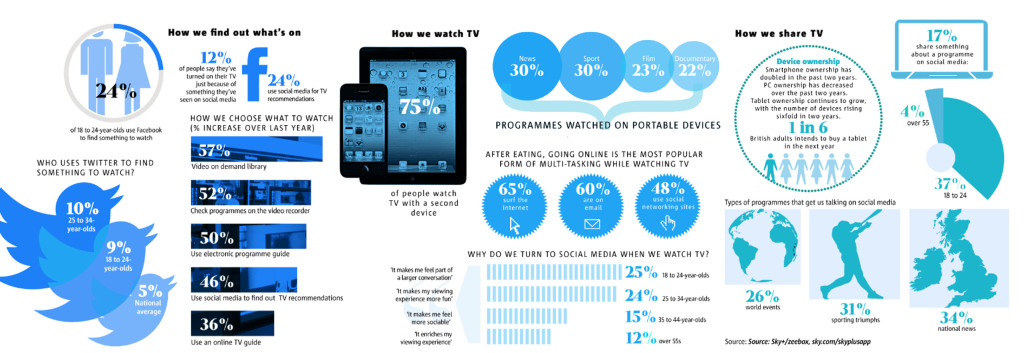
SPhD: How has social media engagement via our phones and computers, directly alongside television watching, changed the metric for viewing popularity, content development and key outreach issues that you’re tackling with your ActionLab initiative?
NB: ActionLab does what we weren’t [previously] able to do, because we have the web platforms now to direct people in multi-directional ways. When I first started on ER in 1994, television and media were uni-directional endeavors. We provided the content, and the viewer consumed it. Now, with Twitter [as an example], we’ve moved from a uni-directional to a multi-directional approach. People are responding, we are responding back to them as the content creators, they’re giving us ideas, they’re telling us what they like, what they don’t like, what works, what doesn’t. And it’s reshaping the content, so it’s this very dynamic process now that didn’t exist in the past. We were really sheltered from public opinion. Now, public opinion can drive what we do and we have to be very careful to put on some filters, because we can’t listen to every single thing that is said, of course. But we do look at what people are saying and we do connect with them in ways they never had access to us before.

This multi-directional approach is not just actors and writers and directors discussing their work on social media, but it’s using all of the tools of the internet to build a new way of storytelling. Now, anyone can do their own shows and it’s very inexpensive. There are all kinds of YouTube shows on now that are watched by many people. It’s a kind of Wild West, where anything goes and I think that’s very exciting. It’s changed the whole world of how we consume media. I [wrote] an episode of ER 20 years ago with George Clooney, where he saved a young boy in a water tunnel, that was watched by 48 million people at once. One out of six Americans. That will never happen again. So, we had a different kind of impact. But now, the media landscape is fractured, and we don’t have anywhere near that kind of audience, and we never will again. It’s a much more democratic and open world than it used to be, and I don’t even think we know what the repercussions of that will be.
SPhD: If you had a wish list, what are some other issues or global obstacles that you’d love to see the entertainment world (and media) tackle more than they do?
NB: In terms of specifics, we really need to talk about civic engagement, and we need to tell stories about how [it] can change the world, not only in micro-ways, say like Habitat For Humanity or programs that make us feel better when we do something to help others, but in a macro policy-driven way, like asking how we are going to provide compulsory secondary education around the world, particularly for girls. How do we instate that? How do we take on child marriage and encourage countries, maybe even through economic boycotts, to raise the age of child marriage, a problem that we know places girls in terrible situations, often with no chance of ever making a good living, much less getting out of poverty. So, we need to think both macroly and microly in terms of our storytelling. We need to think about how to use the internet and crowdsourcing for public policy and social change. How can we amalgamate individuals to support [these issues]? We certainly have the tools now, with Facebook, Twitter and Instagram, and our friends and social networks, to spread the word – and a very good way to spread the word is through short stories.
SPhD: You’ve enjoyed a storied career, and achieved the pinnacle of success in two very competitive and difficult industries. What drives Dr. Neal Baer now, at this stage of your life?
NB: Well, I keep thinking about new and innovative ways to use trans media. How do I use graphic novels in Africa to tell the story of HIV and prevention? How do we use cell phones to tell very short stories that can motivate people to go and get tested? Innovative financing to pay for very expensive drugs around the world? So, I’m very much interested in how storytelling gets the word out, because stories don’t just change minds, they change hearts. Stories tickle our emotions in ways that I think we don’t fully understand yet. And I really want to learn more about that. I want to know about what I call the “epigenetics of storytelling.” I’m writing a book about that, looking into research that [uncovers] how stories actually change our brain and how do we use that knowledge to tell better stories.
Neal Baer, MD is a television writer and producer behind hit shows China Beach, ER, Law & Order SVU, Under The Dome, and others. He is a graduate of Harvard University Medical School and completed a pediatrics internship at Children’s Hospital Los Angeles. A former co-chair of USC’s Norman Lear Center Hollywood, Health and Society, Dr. Baer is the founder of the Global Media Center for Social Impact at the Fielding School of Global Health at UCLA.
*****************
ScriptPhD.com covers science and technology in entertainment, media and advertising. Hire our consulting company for creative content development. Follow us on Twitter and Facebook. Subscribe to our podcast on SoundCloud or iTunes.
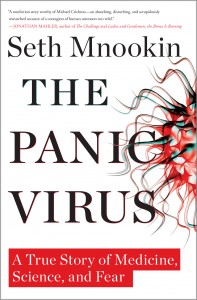
On February 28, 1998, the revered British medical journal The Lancet published a brief paper by then-high profile but controversial gastroenterologist Andrew Wakefield that claimed to have linked the MMR (measles, mumps and rubella) vaccine with regressive autism and inflammation of the colon in a small case number of children. A subsequent paper published four years later claimed to have isolated the strain of attenuated measles virus used in the MMR vaccine in the colons of autistic children through a polymerase chain reaction (PCR amplification). The effect on vaccination rates in the UK was immediate, with MMR vaccinations reaching a record low in 2003/2004, and parts of London losing herd immunity with vaccination rates of 62%. 15 American states currently have immunization rates below the recommended 90% threshold. Wakefield was eventually exposed as a scientific fraud and an opportunist trying to cash in on people’s fears with ‘alternative clinics’ and pre-planned a ‘safe’ vaccine of his own before the Lancet paper was ever published. Even the 12 children in his study turned out to have been selectively referred by parents convinced of a link between the MMR vaccine and their children’s autism. The original Lancet paper was retracted and Wakefield was stripped of his medical license. By that point, irreparable damage had been done that may take decades to reverse.
How could a single fraudulent scientific paper, unable to be replicated or validated by the medical community, cause such widespread panic? How could it influence legions of otherwise rational parents to not vaccinate their children against devastating, preventable diseases, at a cost of millions of dollars in treatment and worse yet, unnecessary child fatalities? And why, despite all evidence to the contrary, have people remained adamant in their beliefs that vaccines are responsible for harming otherwise healthy children, whether through autism or other insidious side effects? In his brilliant, timely, meticulously-researched book The Panic Virus, author Seth Mnookin disseminates the aggregate effect of media coverage, echo chamber information exchange, cognitive biases and the desperate anguish of autism parents as fuel for the recent anti-vaccine movement. In doing so, he retraces the triumphs and missteps in the history of vaccines, examines the social impact of rejecting the scientific method in a more broad perspective, and ways that this current utterly preventable public health crisis can be avoided in future scenarios. A review of The Panic Virus, an enthusiastic ScriptPhD.com Editor’s Selection, follows below.
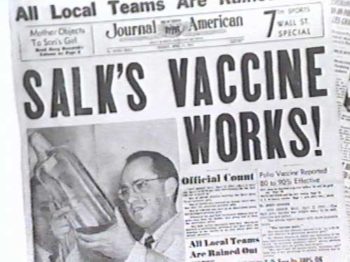
Such fervent controversy over inoculating young children for communicable diseases might have seemed unimaginable to the pre-vaccine generations. It wasn’t long ago, Mnookin chronicles, that death and suffering at the hands of diseases like polio and small pox were the accepted norm. In 18th Century Europe, for example, 400,000 people per year regularly died of small pox, and it caused one third of all cases of blindness. So desperate were people to avoid the illnesses’ ravages, that crude, rudimentary inoculation methods were employed, even at the high risk of death, to achieve life-long immunity. A 1916 polio outbreak in New York City, with fatality rates between 20 and 25 percent, frayed nerves and public health infrastructure to the point of near-anarchy. As the disease waxed and waned in outbreaks throughout the decades that followed, distraught parents had no idea about how to protect their children, who were often far more susceptible to fatality than adults. By the time Jonas Salk’s polio vaccine breakthrough was announced as “safe, effective and potent” on April 12, 1955, pandemonium broke out. “Air raid sirens were set off,” Mnookin writes. “Traffic lights blinked red; churches’ bells rang; grown men and women wept; schoolchildren observed a moment of silence.” Salk’s discovery was hailed as “one of the greatest events in the history of medicine.”
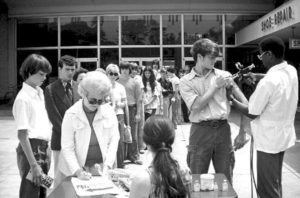
Mnookin doesn’t let scientists off the hook where vaccines are concerned, however, and rightfully so. Starting around World War II, with advances such as the cowpox and polio vaccines, along with the dawning of the Antibiotics Age, eradicating death and suffering from communicable diseases and bacterial infections, a hubris and sense of superiority began to creep into the scientific establishment, with dangerous consequences. Fearing the threat of biological warfare during World War II, a 1941 hastily-constructed US military campaign to vaccinate all US troops against yellow fever resulted in batches contaminated with Hepatitis B, resulting in 300,000 infections and 60 deaths. The first iteration of Salk’s polio vaccine was only 60-90% effective before being perfected and eventually replaced by the more effective Sabin vaccine. Furthermore, dozens of children who had received doses from the first batch of vaccines were paralyzed or killed due to contaminated vaccines that had failed safety tests. In 1976, buoyed by the death of a soldier from a flu virus that bore striking genetic similarity to the 1918 Spanish flu epidemic strain, President Gerald Ford instituted a nation-wide mass vaccination initiative against a “swine flu” epidemic. Unfortunately, although 40 million Americans were vaccinated in three months, 500 developed symptoms of Guillain-Barré syndrome (30 died), seven times higher than would normally be expected as a rare side effect of vaccination. Many people feel that the scars of the 1976 fiasco have incurred a permanent distrust of the medical establishment and have haunted public health influenza immunization efforts to this day.
These black marks on the otherwise miraculous, life-saving history of vaccine development not only instilled a gradual mistrust in public health officials, but laid the groundwork for the incendiary autism-vaccine scandal. The only missing components were a proper context of panic, a snake oil salesman and a compliant media willing to spread his erroneous message.
Enter the autism epidemic and Andrew Wakefield’s hoax. Because this seminal event had such a profound effect on the formation and proliferation of the current anti-vaccine movement, it is chronicled in far greater detail than our introduction above. From precursor incidents that ripened the potential for coercion to the Wakefield’s shoddy methodology and the naive medical community that took him at his word, Mnookin weaves through this case with well-researched scientific facts, interesting interviews and logic. A large chunk of the book is ultimately devoted to the psychology of what the anti-vaccine movement really is: a cognitive bias and a willingness to stay adamant in the belief that vaccines cause harm despite all evidence to the contrary. “If you assume,” he writes, “as I had, that human beings are fundamentally logical creatures, this obsessive preoccupation with a theory that has for all intents and purposes been disproved is hard to fathom. But when it comes to decisions around emotionally charged topics, logic often takes a back seat to a set of unconscious mechanisms that convince us that it is our feelings about a situation and not the facts that represent the truth.”
Given this blog’s objective to cover science and technology in entertainment and media, it would be disingenuous to write about the anti-vaccine movement without recognizing the implicit role played by the media and entertainment industries in exacerbating the polemic. By lending a voice to the anti-vaccine argument, even in a subtle manner or in a journalistic attempt to “be fair to the other side,” over time, an echo chamber of lies turned into an inferno. In 1982, an hour-long NBC documentary called DPT: Vaccine Roulette aired, overemphasizing rare side effects in babies from vaccinations to a nation of alarmed parents and completely undermining their benefits. It was a propaganda piece, but an important hallmark for what would come later. A 2008 episode of the popular ABC hit show Eli Stone irresponsibly aired anti-vaccination propaganda involving a lawyer questioning a pharmaceutical company that manufactures vaccines due to the even then-debunked link to autism. For several recent years, actress and Playboy bunny Jenny McCarthy (who is given an entire chapter by Mnookin) became a tireless advocate against vaccinations, believing that they gave her son autism. She didn’t have any scientific proof for this, but was nevertheless given a platform by everyone from Larry King on CNN to a fawning Oprah Winfrey.
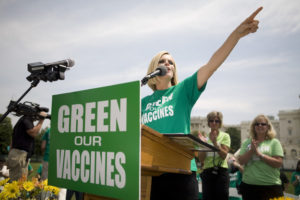
As it turns out, McCarthy’s son never even had autism, but rather a very rare and treatable neurological disorder. In a self-penned editorial for the Chicago Sun-Times, she has officially retroactively denied her anti-vaccine stance, and says she simply wants “more research on their effectiveness.” An extremely sympathetic 2014 eight-page Washington Post magazine article profile of prominent anti-vaccine activist Robert F. Kennedy, Jr. (who believes in the link between vaccines and autism) repeated his talking points numerous times throughout. This, among an endless cycle of interviews and appearances by defiant anti-vaccine proponents, given equal air time side-by-side with frustrated scientists, as if both positions were somehow viable, and worthy of journalistic debate. Once the worm was out of the can, no amount of rational discourse could temper the visceral antipathy that had been created. This is irresponsible, dangerous and flat-out wrong. When the public is confused about an esoteric issue pertaining to science, medicine or technology, influencers in the public eye cannot perpetuate misinformation.
Despite the unanimous medical repudiation of Wakefield’s fraudulent methods and conclusions and the retraction of his Lancet paper, an irreversible and insidious myth had begun permeating, first among the autism community, then spreading to proponents of organic and holistic approaches to health and finally, to mainstream society. In the aftermath of the controversy, epidemiological studies debunking the autism-vaccination “link,” combined with a growing disease crisis, have forced the largest US-based autism advocacy organization to reverse its stance and fully endorse vaccination to a still-divided community. Wakefield remains more defiant than ever, insisting to this day that his research was valid, attempting to sue the British journalism outlet that funded the inquiry into his fraud and peddling holistic treatments for autism as well as his “alternative” vaccine. Sadly, the public health ramifications have nothing short of disastrous, with a dangerous recurrence of several major childhood diseases.
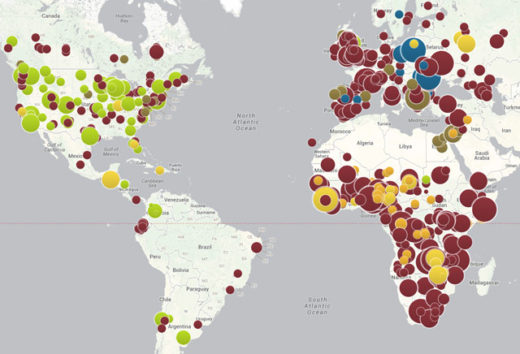
A few examples of the many systemic casualties of the anti-vaccination movement (many occurring just since the publication of Mnookin’s book):
•A summary from the American Medical Association about the nascence of the measles crisis in 2011, when the US saw more measles cases than it had in 15 years
•Immunization rates falling so low that schools in some communities are being forced to terminate personal exemption waivers and, in some cases, legally mandated immunization for public school attendance
•California’s worst whooping cough epidemic in 70 years.
•Most recently, a measles outbreak at Disneyland, resulting in 26 cases spread across four states, after an unvaccinated woman visited the theme park
•Anti-vaccine hysteria has spread to Europe, which has had a measles rise of 348% from 2013 to 2014 (and growing), along with an alarming resurgence of pertussis
The scientific evidence that vaccines work is indisputable, and as the below infographic summarizes, their impact on morbidity from communicable diseases is miraculous. Sadly, now that the anti-vaccine movement has streamlined into the general population, anxious parents are conflicted as to whether vaccinating is the right choice for their children. We must start by going back to the basics of what a vaccine actually is and how it works. Next, we must reiterate the critical importance that maintaining herd immunity above 92-95% plays in protecting not only those too young or immunocompromised to be vaccinated, but even fully vaccinated populations. If all else fails, try emailing skeptical friends and family a clever graphic cartoon that breaks down digestible vaccine facts. Simply put: getting vaccinated is not a personal choice, it’s a selfish and dangerous choice.

The Panic Virus is first and foremost an incredibly entertaining, well-written narrative of the dawn of an anti-vaccine phenomenon which has reached a critical mass. It is also an important case study and cautionary tale about how we process and disseminate information in the age of the Internet and access to instant information. It is also an indictment on a trigger-happy, ratings-driven, sensationalist media that reports “news” as they interpret it first, and bother to check for facts later. In the case of the anti-vaccine movement of the last few years, the media fueled the fire that Andrew Wakefield started, and once a gaggle of angry, sympathetic parents was released, it was difficult (if-near impossible) to undo the damage. This type of journalism, Mnookin writes, “gives credence to the belief that we can intuit our way through all the various decisions we need to make in our lives and it validates the notion that our feelings are a more reliable barometer of reality than the facts.” Sadly, the autism-vaccine panic movement is not an outlying incident, but rather a disconcerting emblem of a growing anti-science agenda. The UN just released its most dire and alarming report ever issued on man-made climate change impacts, warning that temperature changes and industrial pollution will affect not just the environment, extreme weather events and coastal cities, but even the stability of our global economy itself. Immediate rebuttals from an influential lobbying group tried to undermine the majority of the scientists’ findings. So toxic is the corporate and political resistance to any kind of mitigating action, that some feel we need a technological or political miracle to stave off a certain environmental crisis. At a time when physicists are serious debate on evolution versus creationism and thousands of public schools across the United States use taxpayer funds to teach creationism in the classroom.
Mnookin’s book is an important resource and conversation starter for scientists, researchers and frustrated physicians as they carve out talking points and communication strategies to establish a dialogue with the public at large. When young parents have questions about vaccines (no matter how erroneous or ill-informed), pediatricians should already have materials for engaging in a positive, thoughtful discussion with them. When scientists and researchers encounter anti-science proclivities or subversive efforts to undermine their advocacy for a pressing issue, they should be armed with powerful, articulate communicators — ready and willing to deliberate in the media and convey factual information in an accessible way. When Jenny McCarthy and a gaggle of new-age holistic herbologists were peddling their “mommy instincts” and conspiracy theories against vaccines, far too many scientists and physicians simply thought it was beneath them to even engage in a discussion about something whose certainty and proof of concept was beyond reproach. Now, the newest polling suggests that nothing will change an anti-vaxxer’s mind, not even factual reasoning. Going forward, regardless of the issue at hand, this type of response can never happen again. The cost of complacency or arrogance is nothing short of life or death.
The Panic Virus by Seth Mnookin is currently available on paperback and Kindle wherever books are sold. For further reading on how to deal with the complexities of the anti-vaccine movement aftermath, we suggest the recent book On Immunity: An Inoculation by Northwestern University lecturer Eula Bliss.
*****************
ScriptPhD.com covers science and technology in entertainment, media and advertising. Hire our consulting company for creative content development. Follow us on Twitter and Facebook. Subscribe to our podcast on SoundCloud or iTunes.

Earlier this year, the Susan G. Komen Foundation made headlines around the world after their politically-charged decision to cut funding for breast cancer screening at Planned Parenthood caused outrage and negatively impacted donations. Despite reversing the decision and apologizing, many people in the health care and fund raising community feel that the aftermath of the controversy still dogs the foundation. Indeed, Advertising Age literally referred to it as a PR crisis. If all of this sounds more like spin for a brand rather than a charity working towards the cure of a devastating illness, it’s not far from the truth. Susan G. Komen For the Cure, Avon Walk For Breast Cancer and the Revlon Run/Walk For Women represent a triumvirate hegemony in the “pink ribbon” fundraising domain. Over time, their initial breast cancer awareness movement (and everything the pink ribbon stood for symbolically) has moved from activism to pure consumerism. The new documentary Pink Ribbons, Inc. deftly and devastatingly examines the rise of corporate culture in breast cancer fundraising. Who is really profiting from these pink ribbon campaigns, brands or people with the disease? How has the positional messaging of these “pink ribbon” events impacted the women who are actually facing the illness? And finally, has motivation for profit driven the very same companies whose products cause cancer to benefit from the disease? ScriptPhD.com’s Selling Science Smartly advertising series continues with a review of Pink Ribbons, Inc..
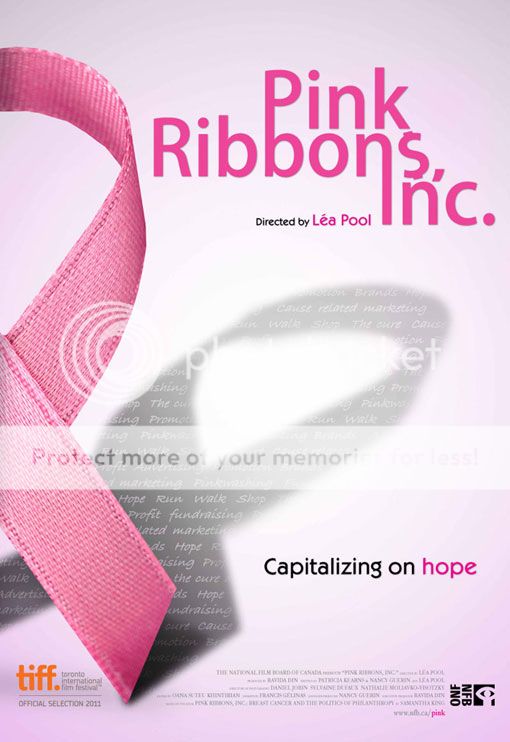
“We used to march in the streets. Now you’re supposed to run for a cure, or walk for a cure, or jump for a cure, or whatever it is,” states Barbara Ehrenreich, breast cancer survivor and author of Welcome to Cancerland, in the opening minutes of the documentary Pink Ribbons, Inc. Directed by Canadian filmmaker Lea Pool and based on the book Pink Ribbons, Inc.: Breast Cancer and the Politics of Philosophy by Samantha King, the documentary features in-depth interviews with leading authors, experts, activists and medical professionals. It also includes an important look at the leading players in breast cancer fundraising and marketing. The production crew filmed a number of prominent fundraising events across North America, using the upbeat festivities (where some didn’t even visibly show the word ‘cancer’) as the backdrop for exploring the “pinkwashing” of breast cancer through marketing, advertising and slick gimmicks. At the same time, showcasing well-meaning, enthusiastic walkers, runners and fundraisers is a double-edged sword and was handled with the appropriate sensitivity by the filmmakers. Pool wanted to “make sure we showed the difference between the participants, and their courage and will to do something positive, and the businesses that use these events to promote their products to make money.”
Often lost amidst the pomp and circumstance of these bright pink feel-good galas is that the origins of the pink ribbon are quite inauspicious. The original pink ribbon wasn’t even pink. It was a salmon-colored cloth ribbon made by breast cancer activist Charlotte Haley as part of a grass roots organization she called Peach Corps. From a kitchen counter mail-in operation, Haley’s vision grew to hundreds of thousands of supporters, so much so that it caught the attention of Estee Lauder founder Evelyn Lauder. The company wanted to buy the peach ribbon from Haley, who refused, so they simply rebranded breast cancer to a comforting, reassuring, non-threatening color: bright pink. And before our very eyes, a stroke of marketing genius was born.
As the pink ribbon movement took hold of the fundraising community, the money started to spill over into mainstream advertising, adorning everything from the food we eat to the clothes we wear, all under the auspices of philanthropy. In theory, people should feel great about buying products that return some of their profits for such a great cause. In practice, many of these campaigns simply throw a bright pink cloak over false, if not cynical, advertising. Take Yoplait’s yearly “Save Lids to Save Lives” campaign:
For every lid you save from a Yoplait yogurt (and mail in, using a $0.44 stamp, mind you!), they will donate 10 cents to breast cancer research. If you ate three yogurts per day for fourth months, you will have raised a grand total of $36 for breast cancer research, but spent more on stamps and in environmental shipping waste. Not as impressive when you break it down, eh?
A recent American Express campaign called “Every Dollar Counts” pledged that every purchase during a four month period would incur a one cent donation to breast cancer research. Unfortunately, they never quantified donations commensurate to spending, so that meant whether you charged a pack of gum or a big screen TV to your AmEx, they would donate a penny. The breast cancer community was so outraged by this hubris, they staged a successful campaign to rescind the ads. The fact is, the above examples demonstrate that pink ribbons have become an industry, with demographics and talking points, just like everything else. Pinkwashing campaigns tend to target middle class, ultra-feminine white women. Why? Because they are typical targets that move the products these industries are trying to sell. Take the NFL’s recent pink screening campaign. Well-meaning or not, it came amidst a series of crimes and violence by NFL players, some of which was domestic in nature. One can imagine that players adorned in hot pink gear would have been a smart way to mollify its rather impressive female fanbase.
As Ehrenreich states in the documentary, the collective effect of this marketing has been to soften breast cancer into a pretty, pink and feminine disease. Nothing too scary, nothing too controversial. Just enough to keep raising money that goes… somewhere. Take a look at the recent chipper television campaign for the Breast Cancer Centre of Australia:
While some of the breast cancer-related branding and pink sponsorships mislead through good intentions, others are a dangerous bold-faced lie. Some of the very companies that sponsor fundraising events and make money off of pink revenue either make deleterious products linked to cancer or stand to profit from treatment of it. Revlon, sponsors of the Run/Walk for Women, are manufacturers of many cosmetics (searchable on the database Skin Deep) that are linked to cancer. The average woman puts on 12 cosmetics products per day, yet only 20% of all cosmetics have undergone FDA examination and safety testing. The pharmaceutical giant Astra Zeneca can’t seem to decide if it’s for or against cancer. They produce the anti-estrogen breast cancer drug Tamoxifen, yet also manufacture the pesticide atrazine (under the Swiss-based company Syngenta), which has been linked to cancer as an estrogen-boosting compound. Breast cancer history month (October) is nothing more than a PR stunt that was invented by a marketing expert at… drumroll please… Astra Zeneca! Their goal was to promote mammography as a powerful weapon in the war against breast cancer. But as the American arm of the largest chemical company in the world, the reality is that Astra Zeneca was and is benefiting from the very illness it was urging women to get screened for. Perhaps the most audacious example of them all is pharmaceutical giant Eli Lilly. Sponsors of cancer research and treatment, both in medicine and the community, Lilly produced the cancer and infertility causing DES (diethylstilbestrol), and currently manufactures rBGH, an artificial hormone given to cows to make them produce more milk. rBGH has been linked to breast cancer and a host of other health problems. These strong corporate links in many ways explain the uplifting, happy, sterile messaging behind the pink ribbon. Corporations are, quite bluntly, making money off of marketing cancer, so if they don’t put a smiley face on the disease, they will alienate their customers and the conglomerate businesses pouring money into these campaigns.

Juxtaposed with the uplifting, bombastic, bright pink backdrop of the various cancer fundraisers and rallies, Pink Ribbons, Inc. quietly profiles the IV League, an Austin, TX-based support group for metastatic breast cancer. The women meet on a regular basis to share stories, help each other cope and accept the rigors of the disease and realities of dying. Many of the group members interviewed found current breast cancer campaign marketing offensive, tastelessly positive and falsely empowering (“If you just get screened and get mammograms and eat healthy, breast cancer can’t happen to you!”). The group, which has lost 10 members last year alone, is among a large faction of cancer sufferers that feel left out in the pinkwashing tide of marketing campaigns. Highlighting that sometimes you do get cancer because of no explanation, and sometimes you won’t respond to any treatment is a downer. It’s not the kind of uplifting story that advertising campaigns are built around, leaving the women feeling as if they’re living alone with the fact that they are dying. “You’re the angel of death,” remarks IV Leaguer Jeanne Collins. “You’re the elephant in the room. And they’re learning to live and you’re learning to die.” By utilizing powerful messaging keywords like BATTLE, WAR and SURVIVOR, cancer foundations and brands are subliminally putting down those who didn’t survive. And there are many who don’t survive — someone dies of breast cancer every 69 seconds. Are they suggesting that people who died or didn’t respond to treatment simply didn’t try hard enough? One of the most poignant moments in the film was an IV League Stage 4 cancer patient, probably weeks or months from her death: “You can die in a perfectly healed state.”
Although Pink Ribbons, Inc. is a sobering polemic against the mindless trivialization of commercializing breast cancer and even misdirecting funds from where they can be most helpful, it is not a hopeless film. Far from projecting pessimism, the film showcases the tremendous willpower and manpower that these three-day walks engender. It is simply misdirected. If hundreds of thousands of women and men can be motivated to fundraise, walk, run and (in some cases) jump out of planes, the effort is absolutely there to stop breast cancer. “Do something besides worry to make a difference,” concludes Barbara Brenner. “We have enormous power, if only we’d use it.” Director Lea Pool hopes that the film will encourage people to “be more critical about our actions and stop thinking that by buying pink toilet paper we’re doing what needs to be done. I don’t want to say that we absolutely shouldn’t be raising money. We are just saying ‘Think before you pink.'”
Watch the trailer for Pink Ribbons, Inc. here:
Pink Ribbons, Inc. goes into wide release in theaters nationwide June 8, 2012 and was released on DVD in September of 2012.
~*ScriptPhD*~
*****************
ScriptPhD.com covers science and technology in entertainment, media and advertising. Hire our consulting company for creative content development.
Subscribe to free email notifications of new posts on our home page.
]]>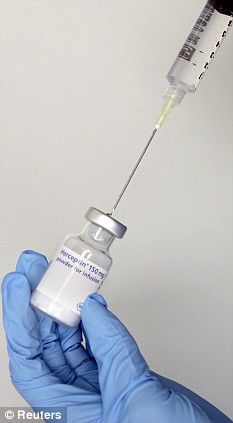
“It’s like a war. You don’t know whether you’re going to win the war. You don’t know if you’re going to survive the war. You don’t know if the project is going to survive the war.” The war? Cancer, still one of the leading causes of death despite 40 years passing since the National Cancer Act of 1971 catapulted Richard Nixon’s famous “War on Cancer.” The speaker of the above quote? A scientist at Genentech, a San Francisco-based biotechnology and pharmaceutical company, describing efforts to pursue a then-promising miracle treatment for breast cancer facing numerous obstacles, not the least of which was the patients’ rapid illness. If it sounds like a made-for-Hollywood story, it is. But I Want So Much To Live is no ordinary documentary. It was commissioned as an in-house documentary by Genentech, a rarity in the staid, secretive scientific corporate world. The production values and storytelling offer a tremendous template for Hollywood filmmakers, as science and biomedical content become even more pervasive in film. Finally, the inspirational story behind Herceptin, one of the most successful cancer treatments of all time, offers a testament and rare insight to the dedication and emotion that makes science work. Full story and review under the “continue reading” cut.
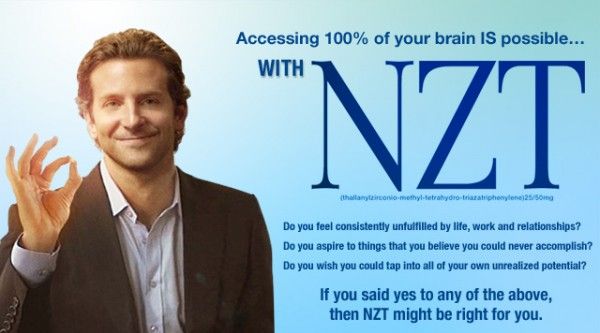
For biotechnology and pharmaceutical companies, it is the best of times, it is the worst of times. On the one hand, many people consider this a Golden Era of pharmaceutical discovery and innovation for certain illnesses like cancer. Others, such as HIV, receive poor grades for drug and vaccine development. Furthermore, the FDA recently passed much more stringent controls on drugs brought to market, leaving some to posit that this will have a negative impact on future pharmaceutical breakthroughs. And while a recent documentary chronicles some of the unhealthy profits of the pharmaceutical industry, the enormous cost of developing and bringing medicines to market is often gravely overlooked. Today, the pharmaceutical industry as a whole has one of the lowest favorability scores of any major industry, despite some impressive social contributions, partnerships and global health investments. Much of this public hostility simply comes down to the fact that people don’t know very much about the pharmaceutical industry, notoriously reluctant to publicize or reveal anything about their inner workings.

Science in Hollywood is experiencing no such crisis. In many ways, it is a golden age for science, technology and medicine in film, with more big-budget mainstream films exploring themes and content germane to 21st Century science than ever before. Last year alone, three smart hit movies broached the realities, hopes and anxiety of the technological times we live in, each in a very different way. The stylish and ambitious thriller Limitless explored the possibility of a limitless brain capacity through pharmacopeia, a magical pill that would maximize one’s intelligence and allow 100% brain function around the clock. Certainly echoing the credo of the modern pharmaceutical movement—there is a pill that can solve every problem, whether it’s been invented or not—Limitless fell slightly short in condemning (or even properly acknowledging) the impracticalities ethical irresponsibility of developing such a drug, especially in its ending. Stephen Soderbergh’s surgical and pinpoint-accurate epic Contagion gave audiences a spine-chilling, terrorizing purview into the medical and public health realities of a modern-day pandemic. But while it strove, and succeeded, in showcasing how government agencies, university labs and medical establishments would contend with and fight off such a global disaster, Contagion was never able to connect audiences emotionally either with the characters impacted by the pandemic or with the scientists battling it. No recent movie is a better example of delicate introspection and exposition than the brilliant, poignant, funny and difficult 50/50. On the heels of CNN pondering whether Hollywood could take on cancer came a film that did so with reality, grace and even humor. Partially because it was based on screenwriter Will Reiser’s own brush with cancer, 50/50 set aside the clinical as a secondary backdrop to examine the psychological.
Each of the films above has an important quality that is be an essential component to effective Hollywood science storytelling – scientific accuracy, emotional connection to the outside world and an overview of biomedical impact and innovation. We recently screened an industry documentary, filmed at the request of Genentech scientists, called I Want So Much To Live, that is an excellent blueprint for the way we’d like to see scientific stories portrayed in film. Best of all, it doesn’t sacrifice the human story for the technical one, nor the very real complex emotions that scientists, engineers and doctors feel when they develop and market potentially life-saving technology.
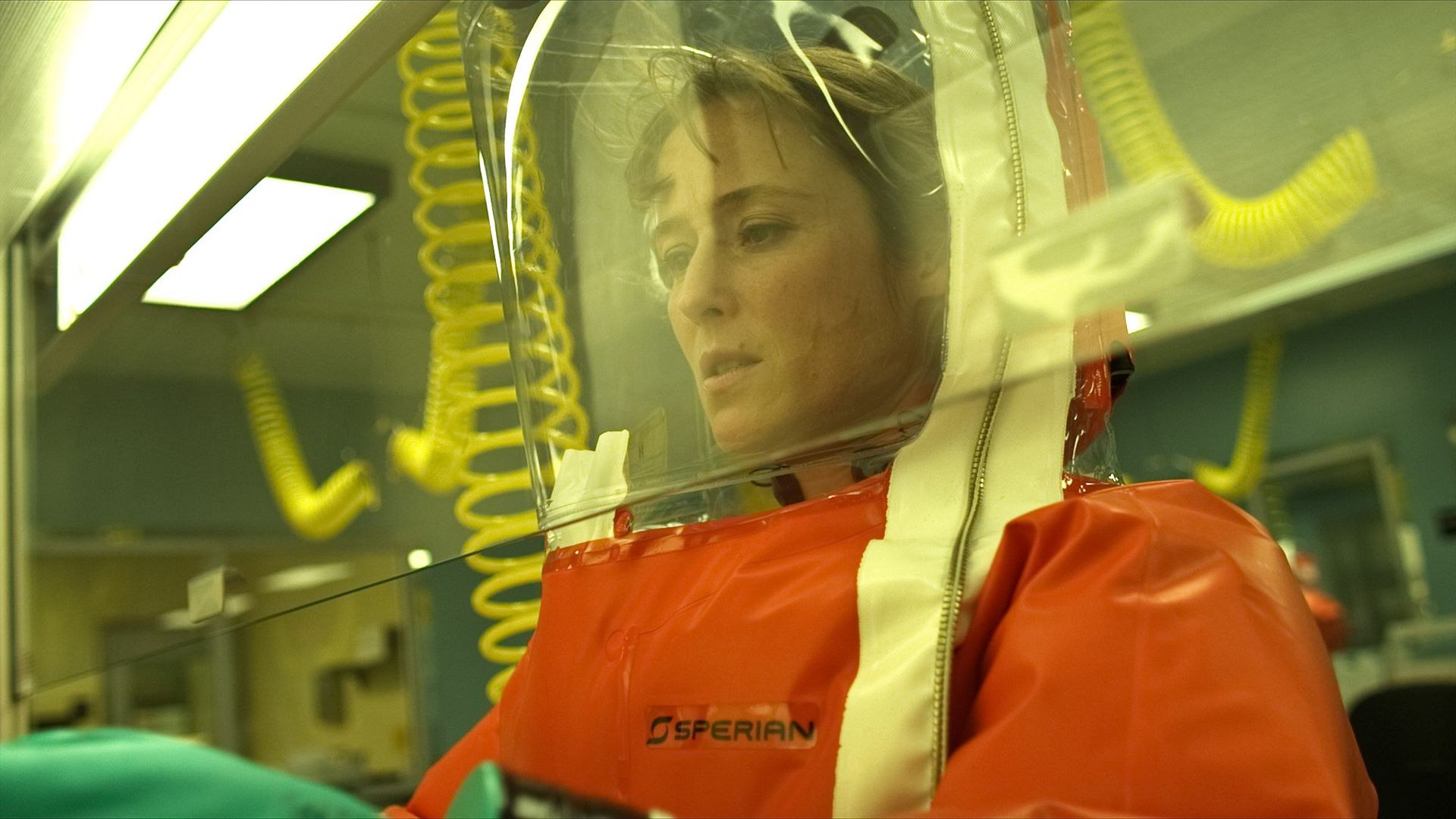
The miracle of Herceptin is really a decade-long journey that started in the labs of UCLA, moved to the pharmaceutical labs of San Francisco, endured countless obstacles, street riots and controversies to end up as one of the most revolutionary breakthroughs in breast cancer treatment research history. Advances in cancer insight always seem to come in evolutionary leaps. For example, the cellular mechanism of how normal cells become cancerous was unknown until Harold Varmus and Michael Bishop established the presence of retroviral oncogenes, genes that control cellular growth and replication. When either disrupted or turned on, these genes contribute to the transformation of normal cells into tumors. Other than the discovery of as an anti-estrogen treatment for breast cancers, relatively little new ground had been gained in fighting the disease. Scientists continued to be perplexed why some women were cured by chemotherapy, which tries to stop cancer cell division by attacking the most rapidly-dividing cells in the body, while others didn’t respond at all. It was not until the late 80s that scientists Alex Ullrich and Michael Shepherd (both featured in the film) discovered that about 20-30% of early-stage breast cancers express amplify a gene called HER-2, a protein embedded in the cell membrane that helps regulate cell growth and signaling. With the help of UCLA scientist Dennis Slamon, famously portrayed by Harry Connick, Jr. in a made-for-TV movie about the development of Herceptin, the scientists soon developed an anti-HER-2 antibody that significantly slowed tumor growth.
An early Phase I clinical trial was conducted simply to establish safety, with 20 volunteers. The lone survivor, still alive to this day, was given 10 weeks to live. Phase II trials honed in on dosage and establishing that the drug performed its intended effects. This time, out of 85 volunteers, 5 survived completely, not a bad result, but not enough for the FDA and the science community. The scientists took a huge risk for their Phase III study. They combined their anti-HER-2 antibody with current treatment. The results were astounding. Out of 450 patients, 50% survived — the highest ever success rate for metastatic cancer!
Think the story ends here? Think again. This is where it just begins to take more emotional twists and turns than a fictitious Hollywood script. Unlike many Hollywood productions, though, the human impact angle was shared equally between all the players in this evolving story, easily this documentary’s most powerful aspect. In order to test their Phase III trials of Herceptin (in concert with chemotherapy treatments available at that time), Genentech had to establish a highly controversial lottery system to pick those who would receive highly limited life-saving quantities of Herceptin, and those who would be categorized in the control studies, and thereby handed a death sentence. So controversial was the lottery system, that it engendered televised protests in the Bay Area, along with anguished pleas from dying patients—the documentary’s title is the first sentence of one such letter: “I want so much to live.” The scientists at Genentech were hardly immune to the weight of each decision, either. They were tormented over the fairness of the lottery system, producing enough high-quality treatment to pass the clinical trial, and even in keeping an unbiased eye on the science to save lives in the long run. Talking about the pressure of those days reduced one of the scientists to tears. And after all was said and done, the lone FDA scientist entrusted with the power to oversee the Herceptin study and green light its approval as a drug? She had just lost her mother to breast cancer. These intertwining fortunes are summarized by executive producer Christie Castro: “By definition, groups of people are imperfect. But those who worked on Herceptin proved that the complexity – indeed, the fantastic mess – that simply comes with being human can sometimes result in something truly worthwhile.”
One of the first patients to get the experimental Herceptin treatment prior to FDA approval, though not profiled in the movie, is flourishing well over a decade after being diagnosed with the most aggressive form of breast cancer. Stories like hers lie at the emotional heart of the I Want So Much To Live story (and Genentech’s motivation for continuing the controversial studies):
Herceptin was officially approved as a drug on September 22, 2000. On October 20, 2010, Herceptin was approved as an adjuvant (joint) treatment with current chemotheraphy drugs for the treatment of aggressive breast cancer. To date, the adjuvant therapy has had an impressive 58% success rate for a cancer that once carried an unlikely rate of survival for those afflicted.
Take a look at the trailer for I Want So Much To Live:
The powerful and well-crafted content of this documentary should serve as a valuable template for how the multi-faceted power of storytelling can be used across multiple industries. It smartly tells a gripping scientific story without either dumbing down the science or elevating it beyond a layperson’s understanding—a certain goal for the increasing amount of cinematic fare such as Contagion. It provides a functional breakdown of the enormous challenges and technical obstacles of the pharmaceutical drug development process. Like many other aspects of science, it is mysterious to the general public, out of their grasp and seemingly always occuring behind closed doors. Especially at a time when public perception of the pharmaceutical industry is at an all-time low, such transparency could strengthen reputations and increase business. “Corporations are,” executive producer Christine Castro reminds us, “groups of people who have ideas, ambitions, conflicts and dreams, and, at the end of the day, a desire to see their work result in something meaningful. That’s why we decided to take a creative chance and face the potential skepticism that a corporation would or could tell an unvarnished story about itself.”
Finally, the film develops a three-dimensional emotional tether to the three different sides impacted by the scientific process: scientists, the agencies that regulate them and society as a whole. There doesn’t always have to be a tacit bad guy, and sometimes, this protagonistic complexity makes for the best story of all. Holder, who started filming I Want So Much To Live around the same time that her late brother was diagnosed with a rare and virulent form of cancer, echoed our sentiment as she reflected on the process of making the film. It allowed her to discover “that science is a creative pursuit as well as a technical one; that science is beautiful and can be accessible; and that anyone, at any time, might have the idea that could one day save lives.”
We can only hope that the harmony of creativity, passion and emotion devoted to all sides of the drug discovery process within this film translates to more private and studio productions dealing with complex scientific and socio-technological issues.
ScriptPhD.com caught up with filmmaker Elizabeth Holder, who directed and produced I Want So Much To Live. Here are some of her thoughts on putting together this incredible story and interacting with the scientists and heroic patients that made it happen:
ScriptPhD.com: Can you tell me where the seeds of inspiration for the story of the drug Herceptin first arose, and what inspired you to tackle this material for your documentary?
Elizabeth Holder: The initial idea to make a documentary film about Herceptin came from executive producer Chris Castro, who upon joining Genentech in 2007 thought that the story would make a compelling documentary film. (She will have to share with you her experience.) I first heard about the project from a friend and began doing research on Herceptin and Genentech. I was excited to work on this film; excited to jump into and explore a new world. My first inspiration came from the people who were the story; the passionate men and women who faced adversity with courage and perseverance, never swaying from their pursuit, making difficult decisions laced with moral and ethical ramifications. I knew this story of individual and collective growth would resonate with many, and would be especially poignant to the employees of Genentech. (This at the time was the intended audience for the film.) When I began working on this film in 2008 I had no idea how personal this journey would become and how connected I would be to the people I would meet and the story I was going to tell.
While I was making the film, my younger brother David was battling cancer – a rare type of cancer for a 33 year old man. While I was meeting with scientists and learning about biotech and drug development for the movie, David was fighting the disease with everything science and medicine could offer. He wrote a blog about his journey, signing off each entry with the words “Plow On”. Each day, I would hope that the scientists would hurry up. Figure it out. But I learned firsthand that science is not a “hurry up” business and that many people are doing everything they can to find ways to stop cancer. My wish is that the film serves to inspire everyone who is on the frontlines in the battle against cancer, to encourage them to keep on fighting the good fight, no matter what, and even on a bad day, to Plow On.
SPhD: How willing were the patients and scientists to contribute to the project?
EH: As you can imagine, everyone, especially scientists, are skeptical. Some people took a bit more convincing than others, but once they started talking, the interviews, both on and off camera, were amazing.
I am grateful to the patients, scientists, activists, executives, and doctors for honestly and enthusiastically sharing their stories, perspective, and experience with me. I quickly became indebted to mentors and colleagues who diligently and without judgment explained and re-explained molecular biology and the drug development process to me. I hope the determination and delight in which they approach their work is reflected in the film.
SPhD: Any of your own preconceived notions that were shattered or altered throughout the making of this film?
EH: I discovered striking similarities between scientists and filmmakers which I did not expect to find. A research scientist and a filmmaker must each imagine an idea, convince others to recognize the value of funding the idea, and then prove the concept. Like many filmmakers, the scientists I met were impassioned about their work and showed great determination in the face of extraordinary odds. Like filmmaking, drug development takes a village. Before making this film I had no idea how many years and how many people it took to develop a drug; the process involves a huge collaborative effort between massive numbers of people in multiple organizations, in various countries.
It was incredible and amazing to me that the scientists would talk about “cells” and “exxons” and “nucleotides” as if they could actually be seen by the human eye. It was also inspiring to me that a scientist is committed enough to work on a research project for their whole career with the knowledge that they might not ever see an outcome in their lifetime. And finally, I was pleased to confirm (though not statistically proven) that a lot of really smart and accomplished people do not have perfectly clean desks.
SPhD: Within the movie, we get a real feel for the dichotomy between the emotional appeals of the desperately ill patients, the cautious, careful FDA scientists, and the Genentech researchers who want to make sure the product they introduce is safe for patients. Was this a thematic element you foresaw or that developed as you pieced the film together?
EH: I carefully planned out the film, yet also left room for new discoveries along the way. (I was constantly learning – from each filmed interview, from advisors, from books.) For each defining moment in the film I made sure to film at least three people talking about the same experience with different opinions. I wanted to make sure that the topic was covered from various perspectives so I could intercut interviews together. I knew that I was not going to use narration. I only wanted people who were part of the story to be telling the story; to engage the audience with their firsthand accounts. I wanted the audience to feel connected emotionally to each person in the film, to empathize with the person on screen even if they disagreed with their tactic and/or goal. Additionally, I knew I was going to use archival footage, photos and authentic documents to organically reveal the isolation and miscommunication, the unwitting partnerships, the building mistrust and the eventual coming together. When I first saw and read the pile of letters saved by Geoff, I knew that I would use it in the film. I carried a few of those letters with me to every interview and pulled them out when it felt right, asking people to read them and respond. The scene was assembled to show how incorrect assumptions lead to strife; to show how each person’s journey was critical to the whole story; and to show how those intertwining stories eventually became the framework for the work that is continuing today.
SPhD: What are your own thoughts on the lottery system that Genentech ultimately used to determine who would be eligible to participate in the Herceptin clinical trials?
EH: I see both sides of the issue, and don’t think there is an easy answer. When interviewing people for this film, I went into each interview with a clean slate, without having any pre-conceived agenda or opinion. It was critical that I empathized with each person and was able to tell the story though the objectives and needs of those who I interviewed, those who had direct experience. I needed to be able to fully see and feel the situation from their point of view. And, to me, judgment is only something that pulls us apart, not together. I am thankful I am in the documentary business and not in the business of making the kind of decisions that had to be made during that time. I am not sure what I would have done if someone I loved needed the drug before it was approved.
~*ScriptPhD*~
*****************
ScriptPhD.com covers science and technology in entertainment, media and advertising. Hire our consulting company for creative content development.
Subscribe to free email notifications of new posts on our home page.
]]>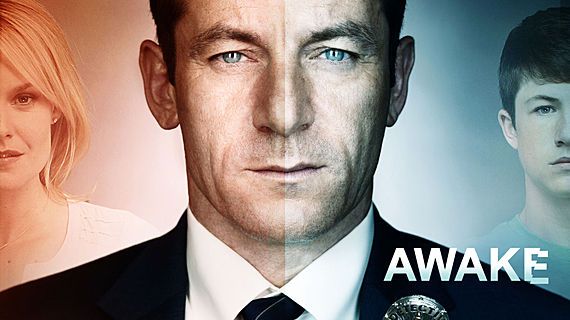
As far back as last summer, when pilots for the current television season were floating around, a quirky sci-fi show for NBC called Awake caught our eye as the best of the lot. Camouflaged in a standard procedural cop show is an ambitious neuroscience concept—a man living in two simultaneous dream worlds, either of which (or neither of which) could be real. We got a look at the first four episodes of the show, which lay a nice foundation for the many thought-provoking questions that will be addressed. We review them here, as well as answering some questions of our own about the sleep science behind the show with UCLA sleep expert Dr. Alon Avidan.
Detective Michael Britten (Jason Isaacs) is a middle class police officer living in Los Angeles, with a lovely wife and teenage son, a virtual ‘everyman’ until an unspeakable tragedy—in the show’s opening moments—transform him into a paranormal dual existence. A violent car accident kills at least one member of his family, possibly both (the audience doesn’t yet know, and neither does Britten). Except instead of mourning the loss and moving on, Britten begins a bifurcated dream existence, where in one state, his wife Hannah (Laura Allen) is alive and his son Rex (Dylan Minnette) has perished, and as soon as he wakes up, the opposite is true. Complicating matters further is the mirroring of his lives on each end of this sleep-wake spectrum state. In his ‘single father’ widower existence, he is partnered with gruff police veteran Isaiah Freeman (Steve Harris), and works with no-nonsense therapist Dr. Judith Evans (Cherry Jones). In his other existence, mourning
the loss of his son with his wife, Britten’s Captain (Laura Innes) has partnered him with rookie Efrem Vega (Wilmer Valderama), as he works things through with kind, objective therapist Dr. John Lee (BD Wong).
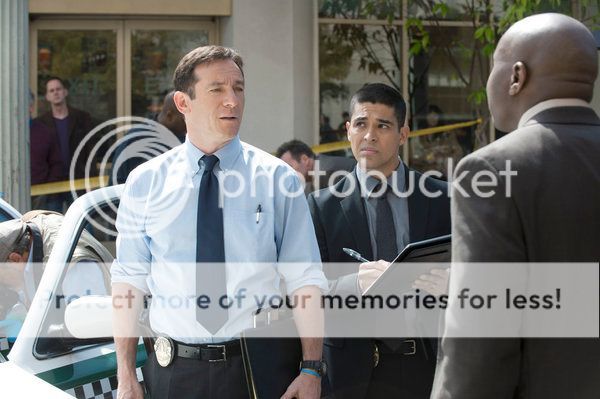
Juggling two worlds might seem complicated (and exhausting) enough, but life for Detective Britten gets even more muddled. Soon sliding with regularity between his two new worlds, he takes various clues from one to solve crimes in the other, even as his behavior in both becomes more erratic and precarious. And while the pilot flawlessly establishes the landscape of Britten’s new reality, future episodes will slowly chip away at it, leaving the viewers with many unanswered questions and mysteries. Is Britten simply dreaming one of these worlds? If so, which is his ‘true’ reality? Is either? Could they both be a lucid dream? Could it be that both his wife and son died? And while later episodes can sometimes veer a bit too much into standard procedural fare, they also offer a thunderbolt of a plot point, suggesting that the car crash that took Britten’s family may have been no accident at all. Given how quickly the last truly ambitious network sci-fi drama (Heroes) veered into absurdity, the steady pacing and erudite plot development of Awake is an almost welcome relief.
We look forward to dreaming for many episodes to come.
Catch up with what you may have missed with this extended trailer:
The sleep science behind the thought-provoking concept of Awake excited us a lot, but we wanted to get deeper answers to some of our most basic questions about the neuroscience of sleep, and just what it is that Michael Britten might be suffering from. To do so, ScriptPhD.com sat down with Dr. Alon Yosefian Avidan, the Director of the Sleep Disorders Laboratory at UCLA’s Department of Neurology.
ScriptPhD.com: Dr. Avidan, for people reading this that may not know very much at all about sleep science, can you give us a brief layperson’s overview of what the scientific consensus is on what sleep is for, exactly?
Alon Avidan: There is no answer. We don’t understand the central reason for why we need sleep. But we know one thing—we can’t do without it. There are about 13 theories that help explain why we sleep. The theories range from needing it to have better memory akin to letting your computer organize files in its sleep mode, so the brain is doing that same thing in your sleep; organizing thoughts, memories and allowing space for new ones to be formed. Another theory is that sleep has a rejuvenating function, essentially for repair, for better immune function. There are other theories that sleep is a hibernation period during which you don’t really need to eat or look for food and it’s a way for you to reserve your energy. This is probably, evolutionarily speaking, back when humans were foraging and needing to conserve energy. There are some theories that sleep is a way for us to synchronize our bodily functions with the Earth. There are really not that many things that we humans are capable of doing during the night, and this is a time for us to synchronize our biological rhythms with that of the Earth.
SPhD: So regardless of which of these theories is true, extreme sleep deprivation has really bad consequences.
AA: Absolutely. When exposed to extreme sleep deprivation, laboratory animals, rats in particular, don’t survive for more than two weeks. They begin to have skin changes, ulcers and they eventually die. In humans, we have situations where people don’t sleep enough. There is a very rare condition called fatal familial insomnia, a condition where patients lose the ability to sleep, and the patient rarely survives beyond a year, maybe six months. But we do know that there are very acute and very chronic consequences that we can observe very quickly [in sleep-deprived patients], including memory problems, planning, and problems with cognitive functions. The chronic issues include inability to regulate food intake, so people end up gaining weight, people end up at risk for diseases that include diabetes, heart disease. And we know that for patients who have primary sleep disorders such as sleep apnea, narcolepsy, insomnia or others, their life expectancy is lower compared to
patients in the same age group.
SPhD: Well, turning to some of the sleep issues in Awake, our main character, Michael Britten, vacillates between two different sleep states, both of which function as his reality, in order to cope with the loss of his wife, son or possibly both. How much do we in fact use our subconscious as a coping mechanism for the traumatic things that happen to us in our lives?
AA: That’s a very interesting point. We know that people who are depressed spend a lot of time in bed, they tend to spend a lot of time sleeping, but their quality of sleep is disrupted. And perhaps it is a coping mechanism for them not to deal with the true conflicts or trauma that are occurring in their lives. What’s very interesting is that in those patients, when they do sleep, sleep is very disrupted. The quality of sleep related to depression or anxiety is really bad. They have arousals, they have awakenings, the duration is short, and the quality of sleep is very light. They often wake up and feel as if they haven’t really slept.
SPhD: What about the dream aspect of sleep in this patient sub-population?
AA: Dreams are when healthy individuals reach the REM cycle (which you know is when we dream). You can have dreams in non-REM cycles as well. What’s interesting is that patients who have post-traumatic stress disorder or anxiety, their dreams are frightening. They’re usually nightmares. Studies show that in many patients who have a very profound trauma like 9/11 survivors in New York City, there was an epidemic of nightmares and stressful sleep experience. Dreams are not normal in patients who have psychiatric disorders, and they are more dramatic and more intense dreams.
SPhD: In the show, Mr. Britten takes clues from one sleep state to solve his crimes in another sleep state (either of which he considers a reality). One of his therapists warns him that doing this is incredibly dangerous because his “unconscious is unreliable.” What do you think the therapist meant by that?
AA: So what’s likely happening to him clinically is that he’s unable to distinguish between sleep and wakefulness. And what is being advised is be more careful not to rely on facts that may be occurring in dreams or wakefulness, because he is not aware which state this is arising from.
SPhD: Is there something to that piece of advice? What about people who regularly swear by premonitions or things they “see” in their dreams?
AA: Clinically, we really don’t see that very often. We don’t see patients relaying a sense of reality between sleep and wakefulness. There is a situation that is neither a sleep state, nor wakefulness, but a combination of the two—the patient has lost sense of what is real and what isn’t. Dissociative fugue disorder is a rare psychiatric disorder where the patient loses their sense of reality, their sense of identity. And it does have something to do with sleep because it’s one of those mixtures of sleep and wakefulness when the patient is unsure of whether they were asleep or awake. It involves extensive memory loss, usually into the wakefulness period, and the person just doesn’t have the capacity to determine what is real and what is fiction.
So, what you are describing with this police officer, he could have this sleep disorder (or something similar) rather than a primary sleep disorder. In the sleep literature, we don’t have patients who strictly come in and lose the perception of sleep and wakefulness and have no other psychiatric issues. What you’re describing is a patient who has a fugue, and may have dream episodes that are very profound, but his underlying primary pathology is a psychiatric one. And there is usually something that crosses this person into the fugue state, and the one thing that does it is usually a major life event that is very stressful. Or a condition in which the patient has such a severe depression that they have no sense of reality because they have a borderline personality and they forget what is real—their sense of reality is so profoundly sad and full of tragedy that they can’t accept it, and are thus creating this lucid state in which they exist more comfortably because they don’t need to deal with the tragedy in their lives.
We want to thank Dr. Avidan for taking time to chat with ScriptPhD.com and give his thoughts on some of the sleep science pertaining to Awake.
~*ScriptPhD*~
*****************
ScriptPhD.com covers science and technology in entertainment, media and advertising. Hire our consulting company for creative content development.
Subscribe to free email notifications of new posts on our home page.
]]>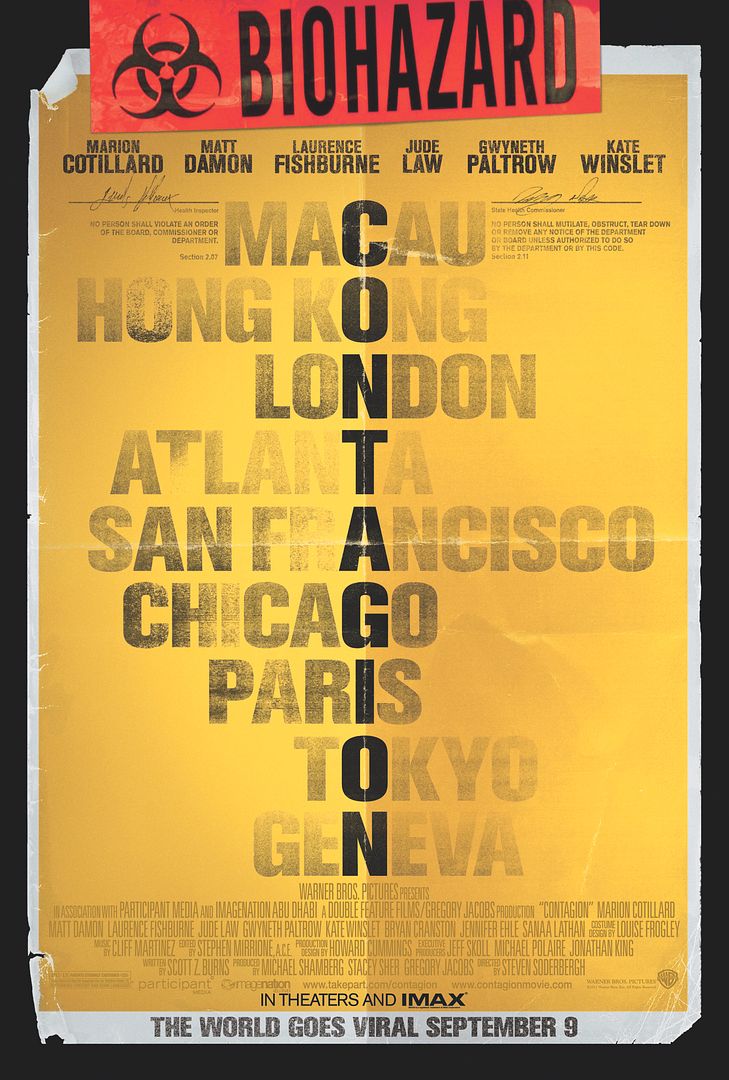
“Don’t talk to anyone, don’t touch anyone.” The austere slogan of the new film Contagion mirrors the gripping subject matter of the latest addition to the pandemic disaster movie club. One of the most science-oriented films to be released in the last few years, Contagion follows the path of several scientists, public health workers, and ordinary citizens as a full-fledged pandemic breaks out from an unknown virus. It explores scientific, moral, social and ethical questions for how we would prepare as a modern society if such a tragedy ever struck us. Additionally, Contagion is a cinematic ode to the visual and technical wonders of modern science, on full display here, both in the storyline and the beatifully-designed sets and costumes. For a full ScriptPhD review, including information on the behind-the-scenes science consultants that worked with the film’s producers to create scientific realism, click “continue reading” below.
REVIEW: Contagion
ScriptPhD Grade: B-
Contagion is one of those all-star Hollywood packages that seem too good to be true, and in this case it is. It’s clear that Oscar-winning director Steven Soderbergh (Erin Brokovich, Traffic, Ocean’s Eleven) paid attention to his advisors and took the time to get the science right, but perhaps he did so at the cost of any real drama making its way through the movie. The star-studded cast, which includes Matt Damon, Kate Winslet, Marion Cotillard, Gwyneth Paltrow, Jude Law and Lawrence Fishburne, may have delivered great performances in their original storylines, but the final cut is such an odd mash up of actionless sequences that it’s impossible to stay invested in any of their stories.

When Beth Ernhoff (Gwyneth Paltrow) returns home to Minneapolis, her bad case of let lag takes a perilous turn for the worse, and two days later, she is dead. To the shock and dismay of her grieving husband Thomas (Matt Damon), doctors don’t know the cause. Soon, the contagion spreads around our increasingly interconnected world, and a pandemic ensues. Scientists at the United States Centers for Disease Control soon take on deciphering the code of a rapidly mutating virus along with quelling the simultaneously rising tide of public panic. While Deputy Director Ellis Cheever (Laurence Fishbourne) allays public panic, Dr. Erin Mears (Kate Winslet) is sent directly into harm’s way. Concurrently, WHO Dr. Leona Orantes (Marion Cotillard) delegates solving the maze of clues that will eventually lead back to what ordinated the virus. While the doctors race time to find a cure, their efforts are thwarted by extremist activist blogger Alan Krumwiede (Jude Law), whose conspiracy theories that the public isn’t getting the whole story from the US Government, which sets of a wave of paranoia more dangerous than the virus itself.
Scientists rejoice! As a realistic depiction of a bird flu epidemic, Contagion attempts to right some of the scientific wrongs of Outbreak, which played more like a conventional zombie movie than a warning parable about the global reach of modern infectious diseases. Contagion was a difficult review for ScriptPhD to compose, because we’ve always marveled at the overt inaccuracies of its predecessor: an unauthorized person walking out of a secured government lab with a sample of a deadly virus (without gloves no less!), scientists and civilians walking into a Biosafety Level 4 lab without proper personal protective equipment, an unrealistic rate of viral spread, and we could go on and on…
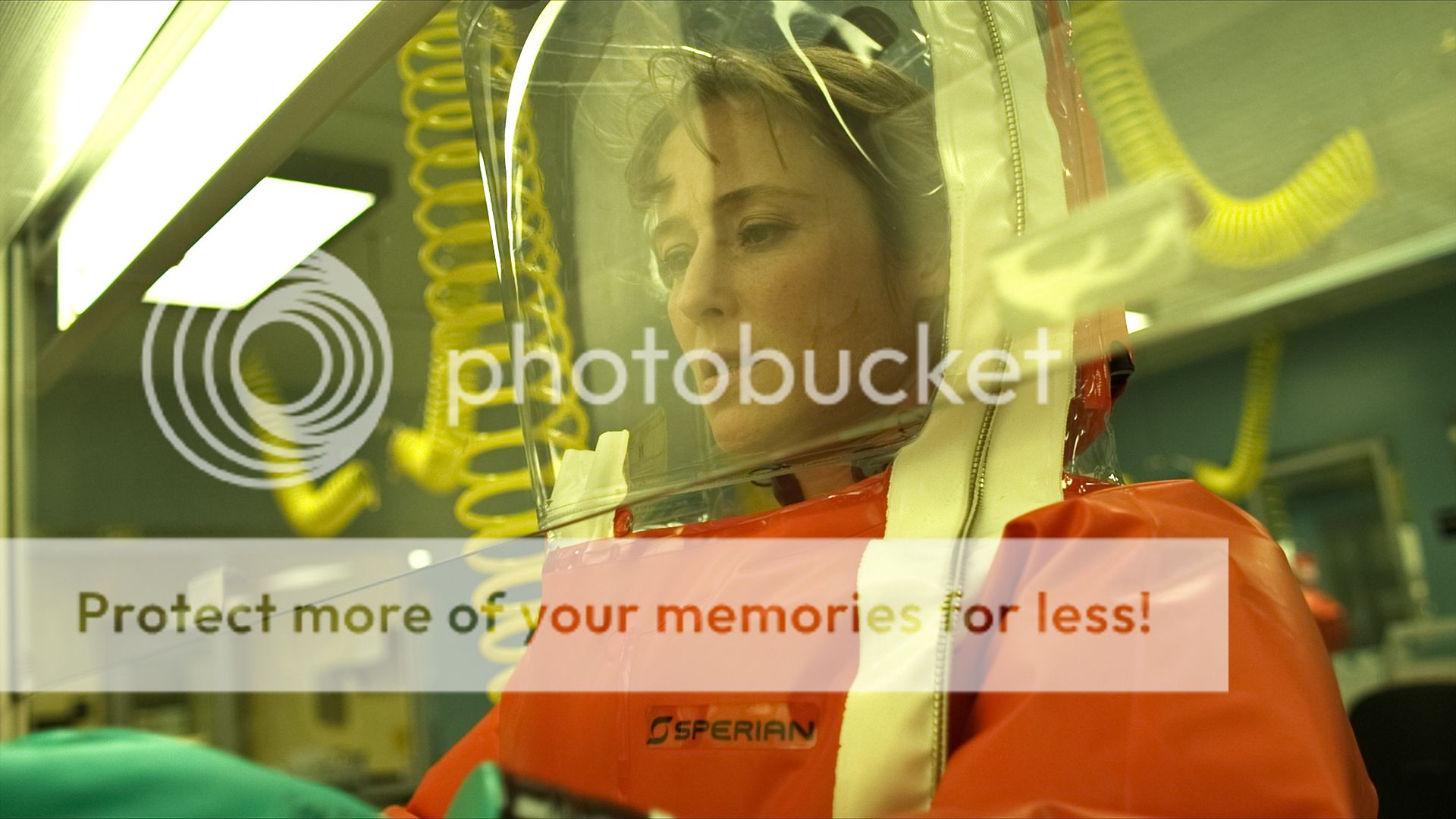
Thanks to the involvement of Participant Media and Warner Brothers, Contagion is a science film masquerading as a public service announcement to raise awareness about the possibility of such an outbreak and show that widespread panic is more dangerous than the virus itself. We applaud this goal. But too many minutes were invested in forcing actors to deliver technical language, along with clunky lines explaining their meaning. The balance between scientific accuracy and storytelling always has to ultimately tip in the balance of storytelling—the lynchpin of compelling films across all genres.
Showing scientists in realistic settings is noble and important, but lab work doesn’t qualify as action, and unfortunately for the viewing audience, that’s as good as it gets for this ‘action-thriller.’ As an example, Marion Cotillard’s Dr. Orantes is introduced in a tense moment of the film with a minute-long montage where we watch her take meetings—she’s literally sitting across a desk and talking to people—but we don’t get to hear what she’s saying because the awkward and uneven score plays over it. This is about the most boring visual montage I’ve ever seen in a movie. Then she gets thrown in a van and we don’t see her for another hour.
There’s a dark secret at the heart of how the virus afflicts Beth Ernhoff, but that drama isn’t allowed to play out in any meaningful way because there are five other plotlines to keep track of. Matt Damon gives some great scenes dealing with her death. But too many emotional punches were pulled: he skips over the death of his son to focus on somewhat-comically keeping his daughter locked away from the boy next door.

Fishburne and Winslet go a good job introducing the audience to the Center for Disease Control and the ridiculous pressures applied to government officials in their position, but don’t look for any happy endings in a movie this insistent on accurate depiction. Finally, Soderbergh is attempting to outdo himself in terms of the number of plotlines he can weave into a cohesive story, following up on his best director Oscar nod for Traffic. Where Traffic succeeded in integrating pieces into a cohesive whole, Contagion stretched my emotional attention span too thin. As the non-linear plot skips among all these amazing actors, the audience is constantly having to recall who they are and what they want.
This became comical at the wrong moment when the film returned to Cotillard’s character teaching schoolchildren in some Chinese village where she’s been held hostage. We are supposed to feel bad for these villagers, now that Marion has become one of them. But the theater was filled with a wave of frenzied whispers as entertainment bloggers consulted their neighbors on what she was doing there in the first place.
Speaking of writers and bloggers, Jude Law’s self-promoting freelancer Alan Krumwiede drew plenty of inside chuckles from the press screening crowd as a blogger seeking to profit from conspiracy theories about the government’s ties to pharmaceutical companies. His character is clearly a tongue-in-cheek homage to biological warfare NGO Sunshine Project muckraker and blogger Edward Hammond. This feeds into the film’s public service message to encourage us to trust our government in a big disaster situation, but it runs counter to the logic of movies that the little guy is corrupt and The Man is actually watching out for us.
If you’re interested in the subject matter or are fascinated by portrayal of science in film, Contagion is well worth the ticket price, but otherwise you’ll probably see it on Netflix in about three months. Contagion is hands-down the most realistic epidemic movie we’ve ever seen, but the film’s competing interests kept it from succeeding in any of its other lofty ambitions. Ultimately, it just wasn’t contagious enough.
Official Trailer:
Contagion goes into wide release on September 9, 2011 in theaters nationwide.
Natasha K. Griffith, MS, director of biosafety and biocontainment at the University of California at Los Angeles, and a world-renowned expert in training scientists to handle the most dangerous pathogens, consulted on all of the laboratory set design and high-tech suits that the actors wore during the filming. We had the opportunity to ask her a few questions about her work with Contagion.
ScriptPhD.com: Tell us a little bit about your expertise and specialty.
Natasha Griffith, MS: My expertise is in high containment laboratory design and management, primarily for Biosafety Level 3 and Biosafety Level 4 labs.
SPhD: Excellent. What kind of work, specifically, did you do for the film production crew? What were you asked to contribute?
NG: I was hired as a technical biosafety consultant. I helped with set design, that is making sure that the set was designed according to regulations, and to make sure that it matched actual BSL-3 and BSL-4 labs. Both are presented in the movie. I worked with the actors that were wearing containment suits at Level 4, and made sure that they knew what they were doing and felt comfortable in the suits. It can be a little difficult if you’ve never worn one of the suits before to just stick you into one and expect you to know what to do. I also oversaw the script, and made sure that all written lines were technically correct, and worked with the set designer to design the Level 3 and Level 4 suits. We also worked closely with the props department to make sure that the items used in the laboratory scenes and that the actors were working with were accurate research-wise. Before the filming even took place, I worked with the set and production designers to make sure that the labs were set up correctly and in place, including all the appropriate biosafety signs, and items in the freezers, and so on.
SPhD: Can you explain to people who are going to see the movie what the difference is between a Level 4 and a Level 3 lab?
NG: A Level 4 lab is truly what we call a “suit lab,” which is where the majority of this movie is presented. People are working in fully enclosed suits, so there’s no contact with the laboratory environment at all. All the air is provided through an external air line into the suit, so that people are not breathing in any air from the lab that might be contaminated with the agent they’re working with. It’s the highest possible level of containment that houses new agents, agents that have a very high mortality, and those that we don’t know much about or have a cure for. A Level 3 lab is one step down from Level 4, so there are different types of personal protective equipment that are used. In this case, the suits are not actually completely isolated from the laboratory environment, but the suits do filter the laboratory air through a special HEPA filter and eliminate any contaminants the scientist might have been exposed to. The agensts housed in a Level 3 lab are usually airborne [infectious disease agents], but we usually have some type of cure or treatment for them.
SPhD: Were there any moments during the filming of Contagion where you saw something terribly inaccurate being filmed and had to correct it? Can you give us examples?
NG: There were some details like this, but for the most part, the people I worked with were trying their best to be very accurate. Changing things wasn’t usually a big problem. A bigger challenge was explaining the highly technical information in such a way that the crew and actors could all understand what was going on and why certain things were important or something had to look a certain way. Usually, once we agreed on those big picture things, changing other small lab-specific details wasn’t a big problem.
SPhD: There have been a host of “pandemic” films that have come out in the last 10-15 years, dealing with global-scale pandemics, something really scary happening. And the fact is, we live in a global world, where in one day, you can travel across half the world (as is depicted in Contagion). The amount of stuff we touch in a given day is truly scary, which is another point the film touches on. In your opinion, having worked in this field, and all the things you’ve seen, is this storyline a Hollywood fantasy or something we should genuinely be investing our research money in and preparing for?
NG: Well, there’s always the possibility of a pandemic, and as you mentioned before, you truly can travel from one end of the world to the other in a very short period of time. So, anything that is new and emerging in Africa or Asia could be here tomorrow, so the risk definitely exists. Research money is obviously being invested already into preparedness, which is really the best way to prepare for such an event. I would say it’s definitely not a Hollywood fantasy. It is something that could happen, and something that we should keep in mind, but not something that we should be paranoid about. We have a lot of things that are always happening, and most of them don’t result in a huge pandemic. But you could say that one day, it might happen. One thing that really impressed me about Contagion was that they really, really tried hard to stay true to the science and what would happen if a pandemic actually happened.
The filmmakers of Contagion also consulted with Dr. Ian Lipkin, one of the world’s foremost microbe hunters and a professor at Columbia University’s Mailman School of Public Health. In addition to suggesting the movie’s plot might be triggered by an outbreak of a virus similar to Nipah, a deadly virus that has, on occasion, migrated from animals to people, Dr. Lipkin provided recollection of his work with the SARS epidemic in Beijing for the WHO and coached Contagion actors on the practices and procedures of scientific research. Here is a video of Dr. Lipkin discussing his work on the film, and why its broader message is so important for raising pandemic awareness and inspiring the next generation of science researchers:
~*Stephen Compson*~
************************
ScriptPhD.com covers science and technology in entertainment, media and advertising. Hire our consulting company for creative content development.
Subscribe to free email notifications of new posts on our home page.
]]>
How many times have you said to yourself, “If only I didn’t have to sleep.” Or “If only I tap into my brain’s full neuronal capacity, imagine the things I could do?” Such neurocognitive superpowers would seem to be the stuff of science fiction…for now. In the new film “Limitless,” these wishes unexpectedly come true for a struggling writer, but the results—and unexpected side effects—cause him to wonder whether it was all worth it. Sleek, stylish, sexy and well-crafted, “Limitless” is part scientific inquiry into the limits of expanding the pharmacopeia beyond current human capacities and part thriller to see if the main character who dares to try will get away with it. ScriptPhD.com’s full review of Limitless under the “continue reading” cut.
REVIEW: Limitless
ScriptPhD.com Grade: B+
“What kind of a guy without a drug or alcohol problem looks like this?” ponders a disheveled, unkempt Eddie Morra (Bradley Cooper) in the new film “Limitless.” Since he’s obviously never met a scientist desperate to publish, he self-responds: a writer. Mired in writer’s block with a looming book contract, living in a New York City rat hole, and dumped by his successful bankroller/girlfriend (Abbie Cornish), Morra is a prototype of every hard-up creative in the absolute nadir of his or her career.
Seemingly by chance, Morra bumps into his ex-brother-in-law Vernon (Johnny Whitworth), a former drug dealer now “consulting” for a pharmaceutical company. He promises Eddie salvation for all his troubles—NZT48, a new miracle drug under development and clinical trial that activates special brain receptors and circuitry to achieve 100% neuronal function. A desperate Eddie takes the chance. Through some very clever color cinematography, the moviegoer takes part in Eddie’s miracle; 12 hours later, he’s written half his book, cleaned out his apartment, and gotten back in the good graces of his landlord. He is a new person.
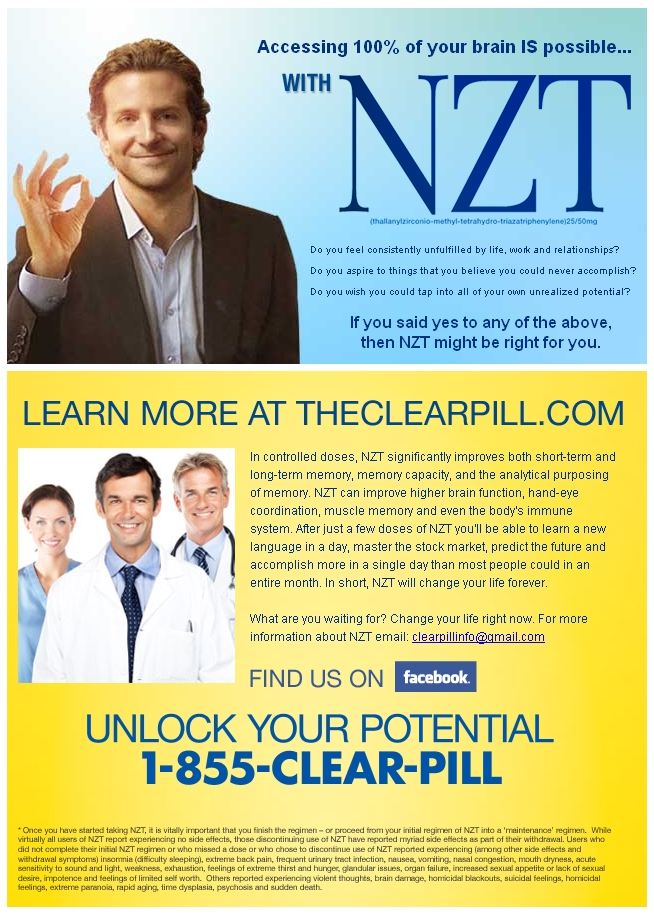
Craving more of his creative panacea, Eddie seeks Vernon out, to discover that not only is NZT48 not FDA approved, but is being dealt illegally, something that ultimately costs Vernon his life. Now the sole proprietor of an entire stash of NZT48, Eddie becomes the king of the world. He reads books in hours, learns languages and instruments in days, makes millions in the stock market, and becomes an expert of multiple specialties within weeks. His life is limitless. If all of this seems too good to be true, it is.
With his stash dwindling, Eddie begins to experience side effects—headaches, nausea, vomiting, losses of chunks of time—and needs more and more NZT48 to function at full capacity. He is dismayed to learn that all of the NZT48 users in Vernon’s address book, which includes his ex-wife (Anna Friel), are either dead, dying or ruined. To top it off, Eddie is now deeply ensconced in a financial trading company, with his new boss Carl Van Loon (Robert De Niro) attempting to broker the biggest merger in corporate history. Leslie Dixon’s clever screenplay, based on the novel “The Dark Fields” by Alan Glynn, complicates the science plot with assassination attempts, murder charges, and a layered group of shady characters, all of whom become intertwined with NZT48.

The basic idea of medical science bestowing us with ‘limitless’ brainpower isn’t all that crazy, according to University of Minnesota physics professor James Kakalios, author of “The Physics of Superheroes” and “The Amazing Story of Quantum Mechanics.” In fact, drugs like Prozac and other SSRI inhibitors actively function by changing the brain’s basic electrochemistry. While it is not true that we only use 10-20% of our brains (we use all of it at different times), it’s only a matter of time before scientific understanding of neurochemistry might outpace the ethical morass of whether such enhancement is appropriate or worth the ensuing side effects, a theme that “Limitless” explores quite well.
The physical deterioration that Eddie experiences is quite possible, but Kakalios suggests that in real life, his character might even end up dumber than he started with a very rapid withdrawal. Without revealing the surprise ending, suffice it to say, NZT48 definitely leaves Eddie’s brain permanently altered. And this clever movie will leave viewers with lots of food for thought.
Relativity Media has put together a very interesting, clever infographic detailing some key facts about the human brain, its capacities and limitations, and the possibilities of future development of the fictional neuroactivating drug portrayed in the film:
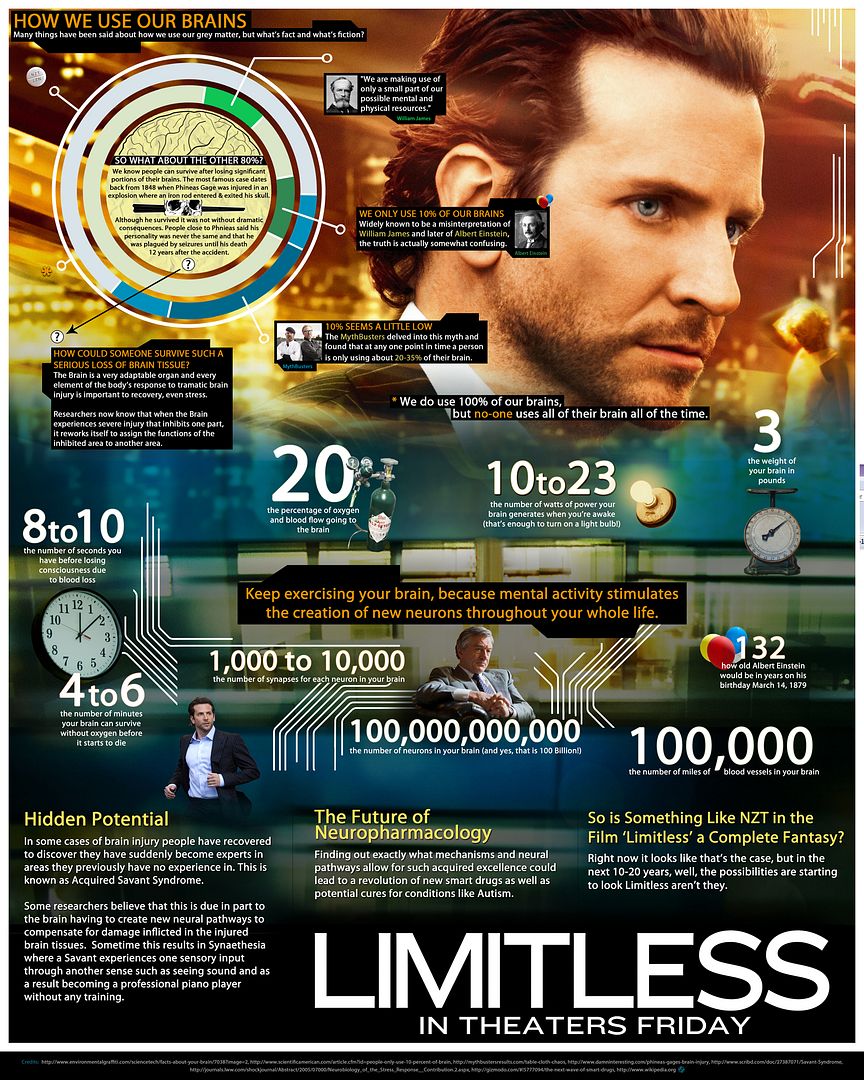
Official Trailer:
Limitless goes into wide theatrical release on Friday, March 18, 2011.
~*ScriptPhD*~
*****************
ScriptPhD.com covers science and technology in entertainment, media and advertising. Hire our consulting company for creative content development.
Subscribe to free email notifications of new posts on our home page.
]]>
“Ask your doctor if this hard-to-pronounce medication is right for you.” Sound familiar? It should. Over the last decade, it’s become difficult to watch an hour of television or read a magazine without running into a commercial for the latest cure for (insert disease here). For all of their ubiquity, the majority of ads are shockingly bereft of uniqueness. Bland, boring, and banal, they represent some of the worst of science creative in modern media. Here at ScriptPhD.com, we couldn’t think of a more appropriate category for the next installment of our ongoing advertising series “Selling Science Smartly.” Rather than expound on the plethora of bad pharmaceutical ads, we deconstruct a near-perfect Pfizer campaign out of Canada and interview the executive creative director behind the concept. Read our complete article under the “continue reading” cut.
Campaign: Pfizer “More Than Medication” (television, web)
Agency: Crispin Porter + Bogusky (formerly Zig Toronto)
Industry: Pharmaceuticals
1999 was a seminal year in the long history of direct-to-consumer marketing of drugs and pharmaceutical products. No, this was not the year that they debuted. In fact, the selling of chemicals and potions goes back to the early 1900s, when deceptive patient ads (snake oil remedies) made up to 50% of advertising revenue for newspapers. Significant changes didn’t occur until 1938, when Congress passed the Federal Food, Drug & Cosmetic Act that stipulated, among other things, that a drug had to be proven safe and effective before it could be marketed. In the early 1980s, when marketing of drugs spilled over from medical professionals to consumers, the FDA requested a brief moratorium on televised ads, which it lifted two years later, requiring only that the ads include a brief summary of the drug’s side effects, contraindications, warnings, and precautions, and provide “fair balance” between the drug’s risks and benefits (see terrific review). It wasn’t until 1999 that the FDA greatly loosened these requirements, only asking that advertisers provide information about side effects in the audiovisual presentation. The rest, as they say, is history.
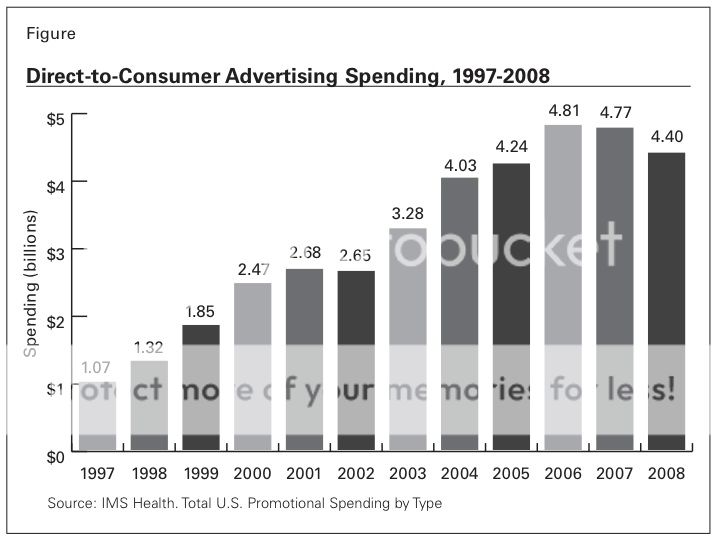
The result of this deregulation of oversight has been an outright torrent of television and print ads over the last decade peddling panacea for everything from depression to restless legs. The table above shows the steady rise in overall spending on direct-to-consumer marketing since the FDA amendment. While the recent recession has somewhat tempered spending, the sector has not suffered to the degree that others have. And while it is true that ad agencies have to contend with much more stringent FDA guidelines for required content (such as warnings, side effects, and medicinal purpose) for drugs than for almost any other product—a unique, difficult creative obstacle—the fact is, pharmaceutical ads are many, and many aren’t good.

Remember that R.E.M. song “Shiny, Happy People?” It could be the anthem of the majority of pharmaceutical ads. You may not know what this medication is for, but it will make you smile as you run in slow motion through fields of sunflowers (assuming that you don’t have allergies; there’s a different commercial for that). Why not ask your doctor about it?? Take for example the egregious, bordering on offensive, 2001 print ad in the picture on the right for the HIV cocktail Zerit. A handsome, chiseled, smiling model in the foreground offers palliative assurance for a disease that scientists have found no cure for, while a group of background “patients” climb a symbolic mountain. The ad was roundly excoriated as the “Joe Camel of drug ads,” and even contributing to an epidemic of unsafe sex by making false promises and misleading impressions. (Actual side effects of HIV cocktail therapy can be so painful and debilitating that some patients refuse treatment.) According to an article in the trade magazine Advertising Age, just last year, the FDA admonished a group of 14 leading pharmaceutical companies for what it claims are misleading, misbranded ads on search engines such as Yahoo! and Google. Some wonder outright whether the proliferation of pharmaceutical marketing, now seen equally as a luxury for the healthy as a necessity for the sick, is having a deleterious effect on medicine.
It is within this cluttered field of profligate, if trite, advertising that an exceptional, authentic campaign out of Canada caught our eye. Geared towards encouraging personal health and wellness, the “More Than Medication” campaign for Pfizer by the Toronto office of ad agency Crispin Porter + Bogusky includes a series of well-produced, well-written television ads (mini-films, really) and a informative website. The storytelling within the two films, “Graffiti” and “Breathe,” is a particular highlight. We dare you to watch the first video, “Graffiti,” all the way through without crying.
Why it’s good science advertising:
The cleverness of CP+B’s “More Than Medication” campaign is 50% in the content that’s there, and 50% in the content that isn’t. Missing are the saccharine smiles, ridiculous athletic feats and idyllic dalliances of perfectly healthy people that never took the medication they’re purporting to be endorsing. Rather than portraying people who could be anyone (or, sadly, no one), these ads are the antithesis. “More Than Medication” is about life—mundane, radiant, lifechanging, heartbreaking. Through all of these milestones, Pfizer is attempting to build relationships one person at a time, and be a valuable presence in their healthy lives at their most important stages. Only time will tell if the campaign pays dividends, but as advertising strategy, it’s brilliant. Pharmaceutical companies rely on wholescale batch assembly at every stage of development, from searching for molecules as drug candidates, to researching them, to the mass production thereof. In fact, the fermentation tanks developed by Pfizer that enabled the first-ever mass production of penicillin during World War II became a national historic landmark in 2008. This doesn’t dictate that pharmaceutical ads must follow the same standard operating protocol.
Why it works:
Beyond “reinventing” pharmaceutical advertising, the “More Than Medication” campaign taps into an important (and growing) wellness zeitgeist being embraced by the professional and private health care sectors. Within the last few years, emphasis has shifted significantly from medication to meditation, pills to pilates, and technology to tofu. Individual preventitive care, including eating habits, exercise, healthfulness beyond chemicals, and individual responsibility, has been gaining momentum as a critical component of modern medicine, nowhere more than in how it is advertised. Kaiser Permanente’s enormously successful and popular “Thrive” campaign, recently expanded to the tune of $53 million, has echoes the welness call to arms of Canada’s “More Than Medication” spots. Internal documents indicate that the 2004 campaign was launched to combat a declining membership of 150,000 in a similarly reviled industry (health insurance). The initially modest reach has since expanded to print, outdoors, television and radio.

Pfizer supplemented their television spots with an interactive website that offers resources for individuals and their families, including eating better, strengthening mind and body, practical life tips, and places to find help to achieve these goals. In doing do, the pharmaceutical behemoth rebrands themselves as in touch, personally connected on an individual level and convey that they care about their patients’ health even if it means never having to take one of their medications.
What other science campaigns can learn from this one…
In Selling Science Smartly, don’t be afraid to be emotional. It seems like contradictory advice. Science and medicine are precise, technical and exacting, and needfully so. What they are not is antiseptic. Ask the medical doctor and nursing staff that spend days, weeks and months getting to know patients and integrated into their lives. Ask the patients and families who experience some of the most emotionally-charged moments of those lives (both joyous and sorrowful) in a hospital. Ask the scientist that slaves away at the bench in the hope that his or her efforts might save or improve lives. How do I know this last one? Because I was one of them. I did a large chunk of my PhD graduate thesis in a Novartis not-for-profit research institute doing drug discovery. My experiments led to a target candidate for acute myeloid leukemia (largely affecting young patients) which is currently being tested in mice. The exultation of a successful experiment and reward of hard work was far supplanted by pure elation at the thought that a life saved far in the future was because of my contribution. There is emotion in science and medicine; indeed, there can be no precision without passion. The role of a good creative is to extrapolate and harness it effectively. To all of my colleagues in labs and hospitals across the world and to all of the patients that their work ultimately affects, a campaign such as “More Than Medication” is a fitting tribute.
Questions for Aaron Starkman, Executive Creative Director—“More Than Medication” campaign for Pfizer
ScriptPhD.com: What was the client’s primary objective with this campaign and how did it lead to the development of the “More Than Medication” concept?
Aaron Starkman: The client wanted to create a bond of trust with consumers. Research showed that consumers don’t trust drug companies, and believe that they put profits before people. In Canada, we also have health care system issues with limited physician access and pressure on doctors to spend less time with patients. Canadians feel powerless when it comes to their health.
We knew that in order for Pfizer to build trust, we had to show Canadians that Pfizer’s point of view was different from other pharmaceutical companies; that, as a company, they believe that wellness is not achieved by taking pills, but about a more holistic, balanced approach that doesn’t require any of their drugs at all. “More Than Medication” was the freshest and clearest expression of our core idea. It takes a lot of people by surprise that a pharma company would take such a stance.
SPhD: Big pharma can be publicly perceived as a bottom line, profit-driven pill dispenser. Additionally, people’s eyes tend to glaze over when dealing with any scientific or medicinal concepts. How did these dual challenges figure in the ultimate mapping out of the “More Than Medication” campaign?
AS: We couldn’t let the work we did reinforce any of the negative perceptions of the pharma industry. We took the completely opposite tack to traditional pharma campaigns which typically focus on research and innovation and how that benefits people. Ultimately, those messages don’t resonate because they are company focused, not people focused. To break through, Pfizer had to shed all of the baggage and aim for a more insightful, emotional high ground which no other pharma company has done, even to this day.
SPhD: The “Be Brave” and “Breathe” videos for this campaign have a tremendously cinematical composition and emotional resonance, above and beyond the feel of a typical :30 or 1:00 ad. Can you speak to the creative development of these “mini-movies”?
AS: Internally, we refer to them as films. And that’s how our director John Mastromonaco treated them. John is a brilliant director and he’s really amazing at developing characters quickly. In “Be Brave” viewers go from feeling that the main character is a thug, to empathizing with him, to getting to know his family, to realizing he’s an amazing brother and a good person- that’s a lot. But John and his production company Untitled Films really believed in the project and the message Pfizer wanted to convey. And they were amazing partners throughout both projects.
SPhD: The ad campaign was launched in 2008. What has been the tangible impact to Pfizer and across Canada?
“More than medication” is more than a campaign – it’s a mantra that has positively impacted how Pfizer behaves as an organization. It’s been culture shifting for them. Externally, it has raised brand scores across a variety of metrics, trust being one of them.
SPhD: Biggest piece of advice for tackling an unorthodox campaign in a technical or dry field (in this case biotech/pharma)?
AS: Be brave.
SPhD: What’s a current ad campaign or creative concept that you really like and why?
AS: I love a non-traditional campaign from Sweden for Swedish Postal Service. They created their own celebrity called ‘Stefan the Swopper’. This guy became famous because he used social media to get out his message. And his message was that he wants to trade every single thing he owns – from his car right down to his toothbrush and boxer shorts. When people asked for details on how the swapping can work, Swedish Post’s service was revealed by Stefan. The campaign was an unbelievable success and a revolutionary way for a client to launch a service.
Take a look at this short video chronicling the clever ‘Stefan the Swopper’ viral campaign construction and its effects in marketing the Postal Service in Sweden:
ScriptPhD.com gratefully thanks Stephen Sapka and Aaron Starkman from Crispin, Porter + Bogusky for their time, coordination and enthusiasm for this project.
~*ScriptPhD*~
*****************
ScriptPhD.com covers science and technology in entertainment, media and advertising. Hire our consulting company for creative content development.
Subscribe to free email notifications of new posts on our home page.
]]>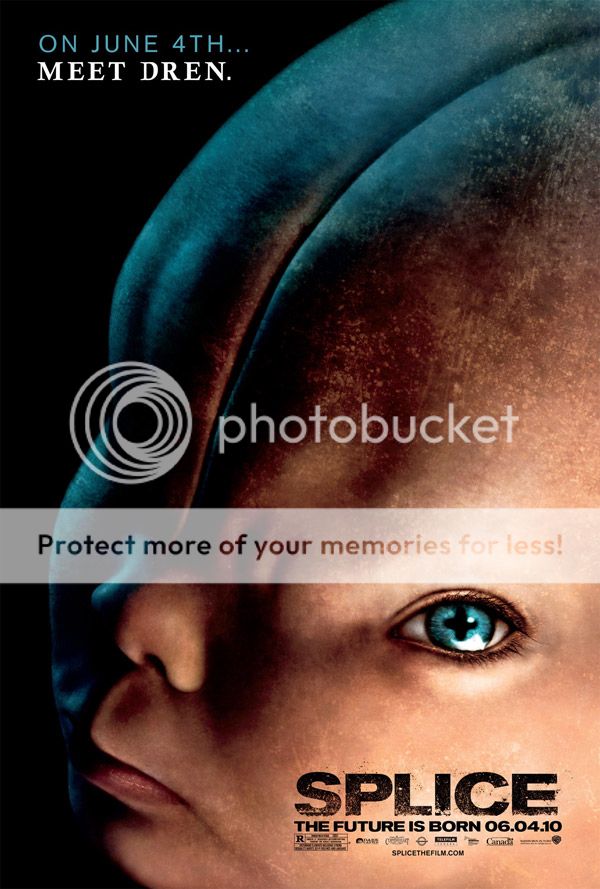
About a week and a half ago, scientists achieved a remarkable evolutionary stepping stone in the technological holy grail of eventually engineering synthetic life. Nicknamed ‘Synthia’ by her experimental progenitors, the latest discovery is a viable, self-propagating yeast cell hosting a bacterial Mycoplasma mycoides genome (consisting of non-biological DNA) purely composed in the laboratory. In eerily apt timing, Splice, a new science fiction thriller premiering this week, explores the scientific ramifications and bioethical morass encompassing the creation of a human-animal hybrid by a rogue superstar genetics couple. Under the “continue reading” cut, ScriptPhD.com’s review of Splice, discussion of the expanding frontiers of genetic engineering, and a special video interview with the director/writer, producer and stars of the film.
REVIEW: Splice
ScriptPhD.com Grade: B
Scientists Clive (Adrien Brody) and Elsa (Sarah Polley) are a superstar genetic engineering couple at the peak of their careers. Employed by the shady Newstead Pharmaceutical company, they excel at splicing DNA from various animals to create male-female hybrid breeding pairs, whose blood contains a curative protein to be used for farm animal epidemics. Clive and Elsa’s suggestion of expanding the research to include human-animal hybrids (for the purposes of tackling human disease models) is quickly rejected by the company for moral and ethical reasons. Infuriated by the slight, and buoyed by their burgeoning success, Elsa convinces a skeptical Clive to infuse their hybrids with human DNA (her own) in clandestine experiments. Remarkably, the effort works, and a fetus of unknown composition and sentience begins incubating in their laboratory. Amidst vociferous protests by Clive to “shut down” the experiment, the creature is born and begins aging at a remarkably rapid pace—she will live her whole life in the span of a few months. Nicknamed “Dren” by her creators, the humanoid child quickly forms a parental bond with Clive and Elsa and develops into an intelligent, thinking, feeling woman before their eyes. But even before the duo can formulate a plan for introducing Dren to the world and facing the consequences of their recklessness, an unexpected, awry turn of events with their simpler hybrids (in easily the film’s most noir humor scene) forever changes the course of events for them all.
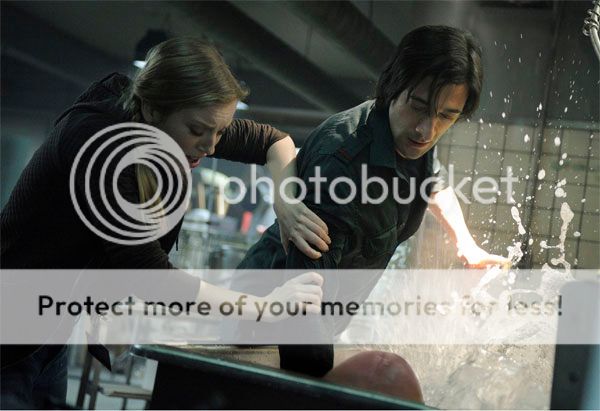
Shot in gorgeous dark hues and with lenses evincing impossible angles, Splice is very much reminiscent of director Vincenzo Natali’s predecessor psychological thriller Cube. The film is also blessed with believable, emotionally rooted acting performances, not the least of which is newcomer Delphine Chanéac’s wordless portrayal of the chimera Dren. Nevertheless, the ambitious material fails to overcome some noticeable flaws. Multiple storylines are introduced without ever being explored beyond the surface. Dren is clearly an intelligent being frustrated by the confines of her helpless existence, but we never learn much more about her than that. Elsa’s motivations for creating (and keeping) her are weighed by a troubled past that is glossed over superfluously. While we at ScriptPhD.com were impressed with the detailed extravagance of the lab sets, and the actors’ ease around the equipment and dialogue, the idea that they alone would have the means and the ability to successfully carry out experiments of this scope in an underground facility borders on the ludicrous. If anything, moviegoers should be relieved that firm regulatory guidelines, not to mention the necessary time and expensive equipment, would render such a scenario unlikely. And then there are, of course, the scenes involving sex between a human and Dren, and both, while shocking, range from the inappropriately funny to the downright disturbing. The director insists that the content was non-negotiable from the start of the film, and that it represented a staple of ancient mythology—to fall in love—that transcends being human. “The prime directive of any organism is to procreate and the creation of a mythical figure like Dren is not too far away,” he said at a recent roundtable gathering in Los Angeles. We’ll let you make up your own minds.

Ultimately, Splice‘s weaknesses in script and story development are supplanted by its penetrating psychological impact and willingness to take shocking risks in exploring a popular sci-fi staple in a novel way. Regardless of whether you dislike the movie’s artistic choices, or whether it appeals to you on a purely cinematic level, Splice will leave you talking as you leave the theater, and more importantly, will leave you thinking long after having seen it, critical of good science fiction. Especially in a world where scientific possibilities seemingly verge on the limitless, and the technology to realize them develops at a lightning pace, thought-provoking discussion of the resulting profound moral implications will be an important part of science media and entertainment. So what is the likelihood of a “Dren” in our imminent future? Not high. Since the famous Vacanti mouse-human ear chimera done at MIT in 1995 (which partially inspired Splice), development of animal-human hybrids has been sparse. Nevertheless, pigs possessing vasculature flowing with human blood, mice with human brains, and a cornucopia of farm animals with human stem cells
have engendered enormous controversy. In 2005, the National Academy of Sciences released a set of voluntary guidelines for researchers working with stem cells, also encompassing chimeras. The International Society for Science and Religion provides an outstanding commentary rich with scholarly science articles on the subject. Furthermore, while British lawmakers approved animal-human hybrids in 2008, a bill introduced by two U.S. Senators in 2009 attempted to prohibit such research (it died in committee, but is surely not the first). Even lead researcher Craig Venter and has acknowledged the considerable time undertaken to create a lone synthetic cell. “We don’t know enough biology to create or synthesize life,” said Boston University synthetic biologist Jim Collins. “I think we’re far removed from understanding how [you would] build a truly artificial genome from scratch.”
Until that fateful day, our imaginations can explore the topic through the kaleidoscope of movies like Splice.
ScriptPhD.com was exceptionally privileged to sit down recently with Splice producer Joel Silver, writer/director Vincenzo Natali, and stars Adrien Brody (Clive) and Sarah Polley (Elsa). We discussed the scientific themes of the film, the ideas of ethics and possibilities in modern genetics pertaining to the film’s content, and how major studio distribution augurs for sci-fi films like Splice.
~*ScriptPhD*~
*****************
ScriptPhD.com covers science and technology in entertainment, media and advertising. Hire us for creative content development.
Subscribe to free email notifications of new posts on our home page.
]]>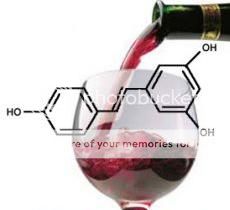
During a recent trip to New York City, I had the pleasure of befriending exciting new author Ernesto Robles, whose debut novel The Malthusian Catastrophe is a ScriptPhD.com recommended pick. Smart, topical, fast-paced and decidedly engrossing, this biomedical thriller drives at the roots of our cultural obsession with the “fountain of youth” and the perilous socioeconomic repercussions of actually finding and disseminating it. In a year when the Nobel Prize for Medicine and Physiology went to a team of researchers for their discovery of how chromosomes are protected by telomeres and the enzyme telomerase, essential biological components of the human aging machinery, and a cultural era that has anointed juvenescence as sacrosanct, Malthusian’s overarching themes are especially germane. ScriptPhD.com’s discussion includes a review of the book, the biology and ethics of current aging research, and a one-on-one interview with Mr. Robles. For full content, please click “continue reading.”
A Malthusian catastrophe, originally postulated by the 18th Century economist Thomas Malthus, proposes that “the power of population is indefinitely greater than the power in the earth to produce subsistence for man. Population, when unchecked, increases in a geometrical ratio.” That is, when a population grows beyond sustainable levels, it will force a return to primitive, subsistence-based living. Highly influential on Charles Darwin’s Natural Selection work, the theory has caused a divergence of opinions on applicability to modern-day conditions. A recent New York Times Science piece argued that post-Industrial Age conditions and improvements to the food supply chain had rendered the theory obsolete, while the Wall Street Journal counterargued that high global living standards (a car for every household, for example) would create deleterious, and eventually catastrophic, economic and environmental crises. Such is the backdrop against which the events of The Malthusian Catastrophe take place.
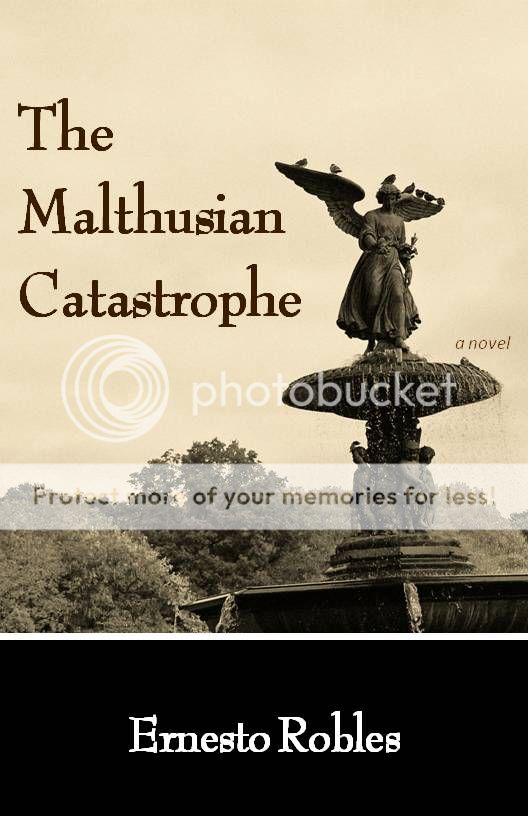
Michael Jeffs is a bright, ambitious former Wall Street broker caught in the web of steadily rising unemployment and economic strife. Desperate for a job, he goes on a last-ditch interview at the mysterious but quickly growing company Aseso Neutraceuticals, sellers of Sinsen, an herbal supplement that is believed to arrest, if not reverse, aging. Headed by passionate brilliant Stanford scientist David Oaks and reclusive Japanese businessman Toshiro Tanaka, Aseso is on the cusp of a global craze. Michael doesn’t know much, but he knows he needs a job, so he accepts Aseso’s offer to run their business strategy and moves to New York City with his compassionate artist girlfriend, Caroline. A fancy apartment, money in the bank, and being a part of “the fountain of youth”—it all seems too good to be true.
With Michael’s help, it doesn’t take long for Aseso to take off. Public acess to Sinsen becomes difficult for all but the richest and most well-connected, a situation that is only exacerbated when scientific studies reveal that Sinsen’s two market rivals, Carotegen and Reversetrol, do not possess anti-aging properties, while Sinsen does. This shocking revelation is based on a scientific deception so grand, that it has far-reaching consequences for Aseso, Michael, and the entire globe. Aseso’s rising fortunes perfectly mirror the spiraling penury and abject living conditions of New York City and the rest of the world, scenes of which represent some of Mr. Robles’s strongest writing throughout the book. Sinsen becomes more than just an anti-aging pill; it bestows political capital, economic force, and ultimately, total domination. All valuable land resources, manpower, government coups, and even acts of terrorism are perpetrated towards production and acquisition of Sinsen. Unfortunately, public zeal and corporate greed are thwarted and toppled by the greatest scientific property of them all—shocking unpredictability.
With a crisp, approachable writing style, Mr. Robles crafts together a stylish novel whose gripping plot points are far outweighed by the modern-day dilemmas they weave together. In the form of character archetypes, he is asking us, the reader, to make a choice about life extension. While Michael Jeffs succumbs to the inertia of a populist tidal force both in taking Sinsen and aggressively marketing it (despite the meek protests of his inner doubts), his girlfriend Caroline is a stalwart moralist who adamantly opposes what she feels is a social experiment gone awry, her graying hair a physiological manifestation of both her indignation and their fraying relationship. In the middle is Dr. Joanna Hochberg, ever the hypocrite, vociferously impugning Sisen use by the general population even as she’s taking it on the side. There is the idea of corporate greed in the dawning of an age where medical and biotechnology advancement represents the future of power, an inequity manifesting itself in the third world before our eyes. In Mr. Robles’s hands, first world citizens are those that can take Sinsen irrespective of geography, and thereby outlive and outlast, and the third world is comprised of those that can’t—with no in-between. Furthermore, the book delves into the price of chasing immortality with unproven, theoretical remedies. [The United States market for supplements (herbal, food and drug)—which are exempt from FDA regulation—exceeded $25 billion in 2008.] Some people, due to a cruel, unexpected twist of biology, even paid the ultimate price.
Finally, and most importantly, is the paramount question of ethics and sustainability. Should we live forever? Can we? The Malthusian Catastrophe closes by invoking a very famous, oft-repeated psychological experiment by John B. Calhoun that tested the limits of population density and sustainability. Building the foundation for a generation of scientists, Calhoun hypothesized that there exists an innate upper limit to the number of meaningful social interactions that an individual could cope with before stress became a factor. In a habitat that could uncomfortably house 5,000 rats, the population always leveled off at 150, and never exceeded 200, incurring extreme behavior including exclusive homosexuality, high (>96%) infant mortality rates, psychological withdrawal, and male hyperaggression. The experiment was named as one of 40 Studies That Changed Psychology, and Calhoun’s rats have come to serve as a model for urban crowding and decay, civil unrest (including the Watts and Newark 60s riots), and sustainable population growth models. All of this begs the question of whether it’s ethical to fight the natural biology of aging and generational turnover, or whether technological advancement represents a quantum leap in human evolution and survival of the fittest. Professor Peter Singer, an Australian philosopher and Professor of Bioethics at Princeton University, has engendered enormous controversy for his claims that animals deserve to be treated like humans, and his pro-euthanasia stances. In the early 90s, Dr. Singer argued against radical life extension and the production of an anti-aging pill as developing the drug would fail to achieve the greatest sum of happiness over time. On the opposite side of the bioethical spectrum is another Aussie, Dr. Russell Blackford, Professor of philosophy and bioethics at Monash University. His recent piece in the “Institute For Ethics and Emerging Technologies” blog offers a diametrical proposal: that such a pill will be produced anyway and, all other factors being equal, as long as the expanded lives end well, they are morally acceptable.
The aforementioned concepts were beautifully assembled in a recent TED Talk by UCLA Professor and scientist Jared Diamond, author of Guns, Germs and Steel: The Fates of Human Societies and Collapse: How Societies Choose to Fail or Succeed. Please ignore the awful combover—he’s really a very smart man!
The Biology of Aging: Source for a Cure?

Embedded within The Malthusian Catastrophe is some fairly sophisticated and cleverly-researched biology. The supplement sinsen is derived from the root of the actual Chinese Astragalus plant, and acts as an activator of telomerase, an enzyme that plays a key function in protecting telomeres and has been implicated in the canon of anti-aging research and drug development. Let’s first back up and talk about what telomeres are and why they’re so critical. The 2009 Nobel Prize in Medicine was awarded to three American researchers, Drs. Jack Szostak, Carol Greider and Elizabeth Blackburn, for discovery of and contributions to the field of telomere research. The DNA that codes your genes (what makes you you) goes through a series of complex folding and packaging steps to condense its volume, protect the DNA, and allow for simpler replication of genetic material during cell division, an ever-ongoing process during our lives. Long strings of DNA are first scrunched together like a wad of paper in structures called “nucleosomes”, then combine with and around proteins called histones to form “beads-on-a-string” (sort of like a necklace with a bunch of charms on it), then into dense ordered fibers, and finally into the familiar compact X-shape by which we can identify chromosomes. At the very tips of these structures are ordered, noncoding, repetitive sequences of DNA that act as “caps” to the chromosome (see picture). These are called telomeres. Blackburn has compared these ends to the protective anglets at the ends of shoelaces. When a cell divides, this folding process reverses itself and DNA unwinds to copy for the new cell. In order to protect the more important parts of your DNA (those that actually code for proteins), the replication process “snips” the very ends—the telomeres. Eventually, over the course of enough cell divisions, the telomere frays to a dangerously short length, endangering these important regions of DNA. Scientists can tell how old a cell is based on its telomere length, akin to the rings of a tree trunk. Telomeres have thus been implicated in human aging, cancer, and many of the so-called “aging diseases”.
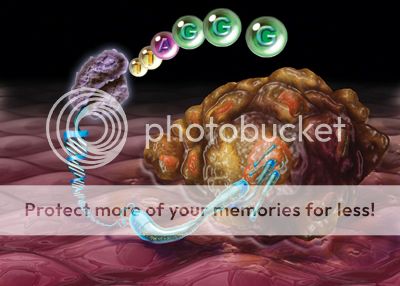
Luckily for us, biology has devised a very clever, evolutionarily conserved mechanism for decelerating chromosomal shortening in the form of telomerase, an enzyme that elongates telomeres by adding a specific DNA sequence common to all vertebrate animals (TTAGGG). Activation of this enzyme is considered the Holy Grail of anti-aging research. Interestingly, research has shown that socioeconomic status correlates to telomere length, with poorer people exhibiting shorter telomeres than the rich. New York City based TA Sciences is attempting to invent itself as the real-life Aseso Neutraceuticals, marketing a pill called TA-65, an extract of the same herb in the book, Astragalus, a plant has been used for centuries by Chinese herbalists for medicinal purposes. TA Sciences concentrates a low-level extract in the form of TA-65, which they propose is a telomerase activator. Recent media attention has included Newsweek and the Los Angeles Times. (Los Angeles? Interested in eternal youth? Color me stunned!) But before you rush to the TA Sciences website to put in your order for this super-supplement, be aware that several challenges currently face telomere research, including lack of an appropriate animal testing model, evidence that telomere lengthening may increase cancer cell proliferation, and of course, the risk of taking an unknown substance that has not been approved by the FDA.
One thing you can do fearlessly, and often, is drink red wine. The grapevine produces one of the highest naturally occurring concentrations of resveratrol in the skin of the grape of any food or herb. What is resveratrol and why is it a key to aging and disease? Numerous consensus studies of late (a nice collection can be found here) have found that calorie restriction diets in mice, rats, and other animals drastically expand their life spans. One important biochemical pathway activated by these low-calorie diets are the enzyme family of sirtuins. Sirtuins regulate key components of metabolism, cell defense and reproduction, and one of the most powerful sirtuin activators is… you guessed it! Resveratrol. Indeed, a landmark 2006 study found that the physiology of obese mice whose high fat diet was supplemented by resveratrol mirrored that of a healthy mouse and significantly extended their lives compared to placebo groups. Naturally, the market and demand for resveratrol nutritional supplements sprouted virtually overnight, with production coming from both chemical synthesis and extraction from Japanese knotweed. To date, benefits to humans of resveratrol supplements are unproven and the collective field of anti-aging research has advanced modestly. Resveratrol can also be found in blueberries, peanuts, and various other plants. But here at ScriptPhD.com, we think red wine is the best solution. Salud!
We are clearly on the cusp of grasping the futuristic science imagined by Mr. Robles. Research will undoubtedly unlock the biological keys of aging, disease, and the pharmaceutical industry will likely follow suit with a panacea of one sort or another. It is not inconceivable that within our lifetimes, we will be offered the same choice as the characters of The Malthusian Catastrophe. Age naturally, or defy Mother Nature? Which will you choose?
Interview with The Malthusian Catastrophe author Ernesto Robles:
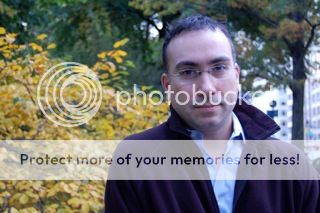
ScriptPhD.com: Your background professionally spans economics and business, and yet the book that you wrote is in essence a biomedical thriller. What prompted your interest in science as a backdrop for your first novel?
I started off wanting to write an economic oriented non-fiction book catered to people who do not know much about economics. After a bit of research, I concluded that many in my target audience would prefer to learn something if it were embedded within an entertaining story. Also, I find it helpful to extend a scenario to its logical extreme to better illustrate a point. Economics is basically the study of the behavioral interaction between those that demand and those that supply. To that end, I decided to write a novel about something many people would demand (extended life) and those that supply (profit motivated companies). When I started researching the science of aging, I came across many scientists doing serious research on the subject. I decided to base the science in the book on one particular scientist Dr. Elizabeth Blackburn, UCSF. Coincidently she won the Nobel Prize in Medicine this past October, one month before the book was published.
Science has the potential to make linear trends go, all of a sudden, parabolic… but then again so does human behavior… which makes for an interesting story.
SPhD: One of the ways that Aseso Neutraceuticals is able to execute the (unnamed) Grand Deception that sets off the key chain of events is through marketing Sinsen as a supplement, not a drug, thereby absolving it of the FDA regulatory oversight that all other drugs are subject to. Is this book at all a commentary on the hundreds, if not thousands, of nutritional supplements being consumed without any clear knowledge of effects or safety, and would you support FDA approval of nutritional supplements?
ER: To answer the question I should shed light on the situation. Right now the responsibility of the safety of a new supplement rests with the manufacturer and only after the product hits the market, and is presumably consumed by people, does the FDA assume some responsibility. I say “some” because the FDA is responsible for the safety of the product; which is to say that it is responsible for the product not causing you any harm; but it certainly does not opine on the efficacy of the product. Having each supplement pulled from the market to undergo clinical trials seems a bit impractical. People should do their own research and consult with their primary doctor. This situation is like going to church. The structural engineer of the municipality that certified the church as “safe” did not make any claims about the efficacy of that church towards entry to heaven. As long as people truly understand the analogy the current practice seems the most practical given the limited resources available to the FDA.
The commentary in the book was more to say that the FDA like many governmental agencies is a political institution where some of the actions only seem logical from a political perspective. Much of what is studied and approved at the FDA is driven by pharmaceutical companies wanting to bring a new drug to market. If a disease has not yet been classified, that would either be prevented or cured by this hypothetical new drug, then the
FDA just might classify a new disease solely to have the new drug approved. I am not saying this is the right or wrong way to do things, I just think people should be aware of how things in Washington DC get done. If someone is trying to sell a solution it helps that a problem exists.
SPhD: Before the climactic revelation that is the novel’s denouement, Sinsen engenders a very strong two-sided debate. There are those that feel it’s a miracle pill and that everyone should revel in its anti-aging benefits (such as the novel’s protagonist Michael Jeffs), and there are those who feel it’s messing with God or Mother Nature, and that people should age naturally as the order of the universe dictates (such as Michael’s girlfriend Caroline). When all is said and done, what side of the debate do you fall on? Would you take Sinsen?
ER: I would probably fall on the side of a third character, Dr. Joanna Hochberg. I am a selfish person like anyone else (perhaps more so) so it would be hard for me to resist taking Sinsen however the moral intellectual inside of me (if there is one…a big if) would have to admit to the obvious social consequences that would result. I am a huge carnivore. If the US outlawed meat I might be tempted to follow my roots back to Mexico. If we lived in the world of The Malthusian Catastrophe and the US outlawed Sinsen you can bet my Spanish would improve dramatically.
SPhD: There are many thematic elements at play in this novel, including the vain pursuit of endless youth, greed, deception, and biomedical ethics, but at its heart, this book is an economic cautionary tale. The long-term ramifications of continuing to supply Sinsen to an expanding client list are potentially devastating. What is the one take-away point you want people to absorb from reading this book?
ER: The big take away should be something I call “Rolling the Film Forward”. I know someone who has lived in San Diego for most of his life. For the first house he bought he had to put ten percent down. For the second house he bought, in 2002, he didn’t have to put any money down. Finally, for the last house he bought in 2005 the bank gave him 10 percent on top of the value of the house. This is a classic case of people (in this case banks and the capital markets) not Rolling the Film Forward. This scenario was obviously not sustainable and therefore most likely reversible. Rolling the Film Forward, one could have predicted the film would have a bad ending. There is a good book, Devil Take the Hindmost (Edward Chancellor), that gives a pretty good historical account of this type of thing happening again and again. One other life lesson I would like to share is the following: If you ever find yourself scratching your head wondering why an event or change took place that seemed contrary to logic or societal benefit, then go find out who stood to profit the most from that change. More often than not you will discover that they had something to do with it.
SPhD: Any chance we will see “The Malthusian Catastrophe” head to a movie theater in the future? It would certainly make for a very gripping cinematic experience.
ER: Many people ask me that. I haven’t had any serious discussions but would be open to it.
SPhD: What are some of your future projects that we can look forward to?
ER: I am currently working on my second novel. The story is based on an old Wall Street urban legend. Hopefully people will react to it as positively as they have to The Malthusian Catastrophe. I’ll be sure to send you an advance copy.
~*ScriptPhD*~
*****************
ScriptPhD.com covers science and technology in entertainment, media and advertising. Hire our consulting company for creative content development.
Follow us on Twitter and our Facebook fan page. Subscribe to free email notifications of new posts on our home page.
]]>
